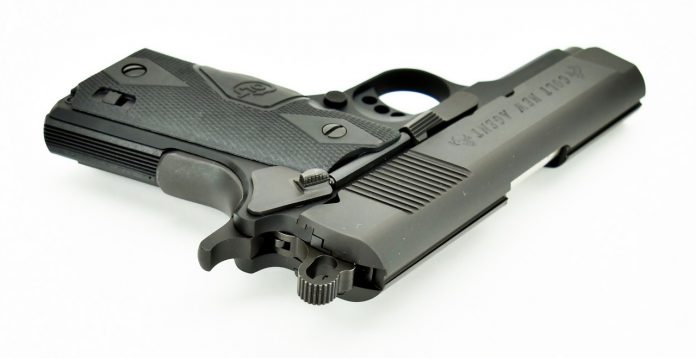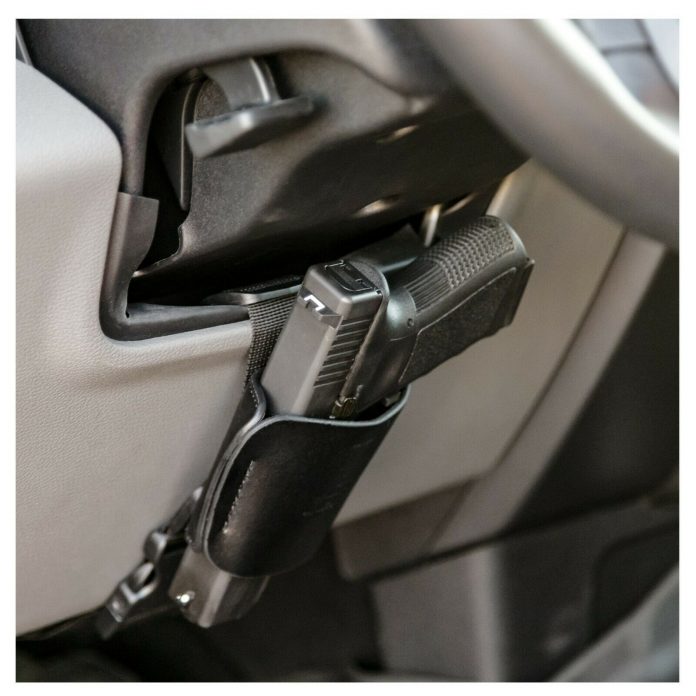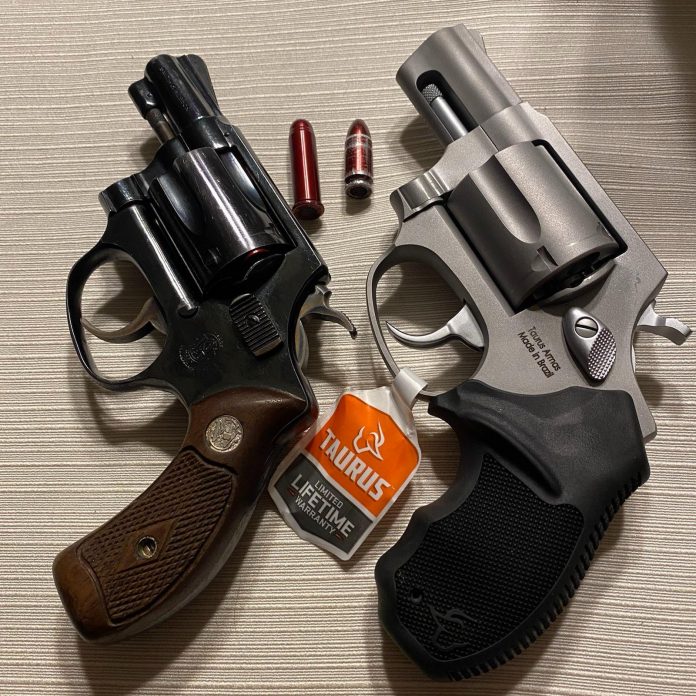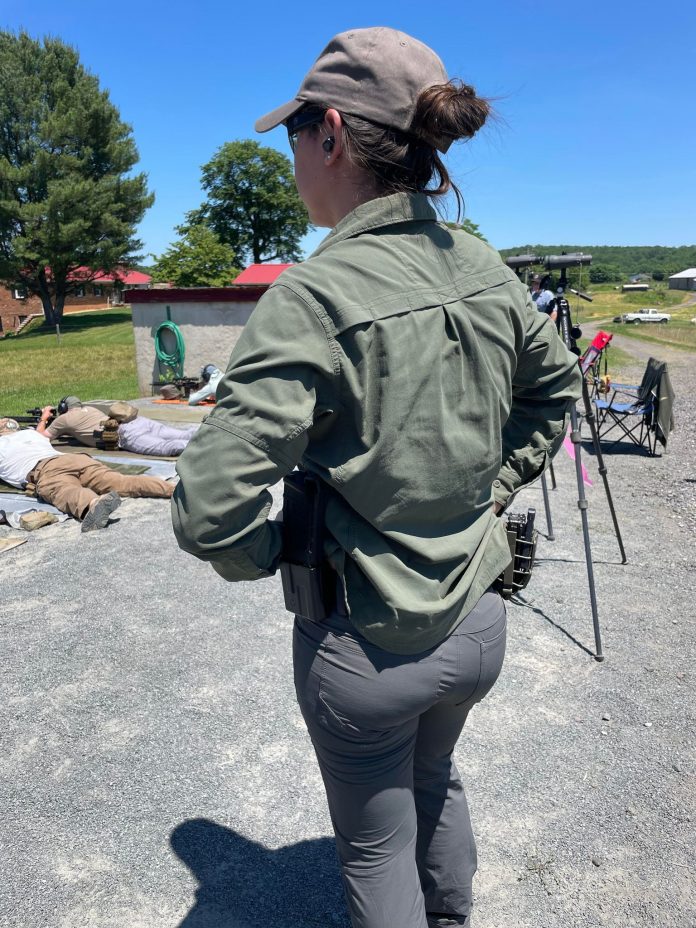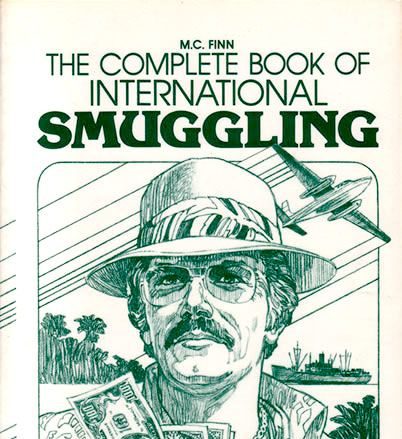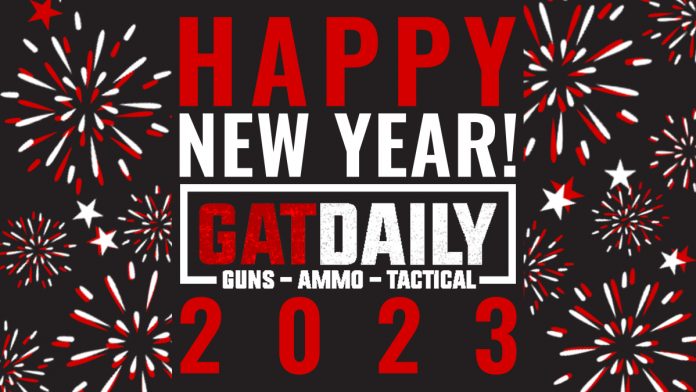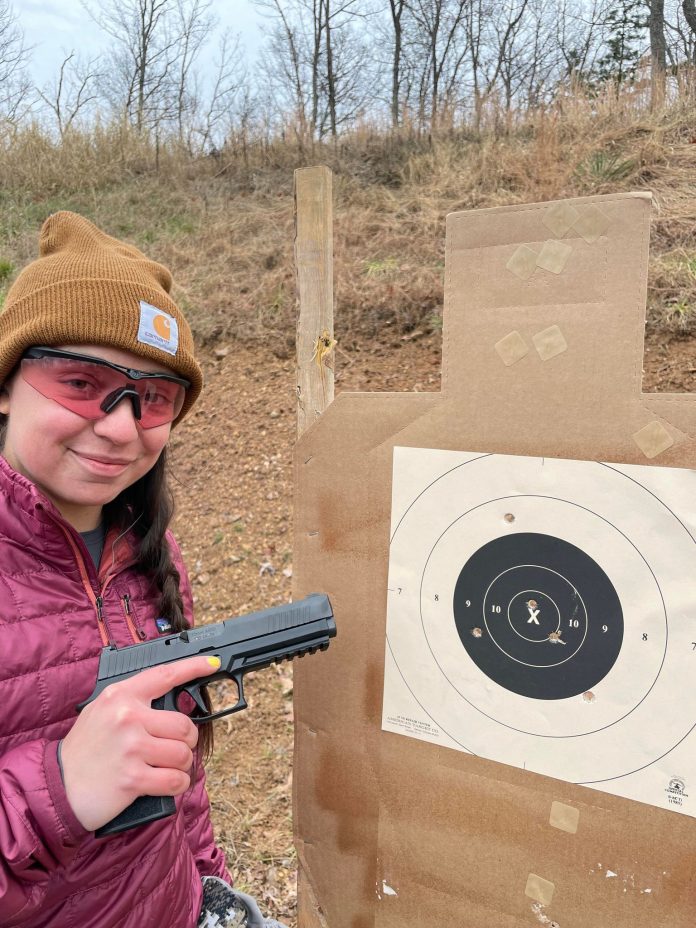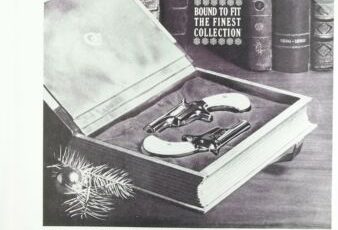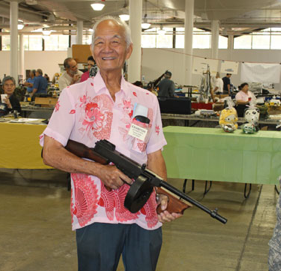Before we discuss the proposed Washington AWB (Assault Weapons Ban), In 2018, Washington State passed I-1639, which defined “Semiautomatic Assault Rifles” (SARs) as ” a rifle which utilizes a portion
of the energy of a firing cartridge to extract the fired cartridge case and chamber the next round, and
which requires a separate pull of the trigger to fire each cartridge”, and mandated background checks, as well as a training course prior to purchase, and prohibited sales of such to anyone under 21. To anyone with a passing acquaintance with the function of firearms, this is an obvious play at making literally any gun that isn’t manually operated an “assault weapon”, and thus subject to the increased scrutiny and de-facto registration I-1639 placed on the purchase of such.
Not satisfied with that, Washington Governor Inslee and anti-gun advocates have now proposed a ban on the very “assault weapons” they vastly broadened the state’s definition of in 2018. It seems likely that should such a ban be enacted, functionally every modern firearm that isn’t pump, lever, or bolt-action would become unavailable to Washingtonians. The proposed Washington AWB would fall among the most draconian restrictions on 2A rights in the US, potentially making even California look somewhat reasonable by comparison. Which is an admittedly depressing concept to mull over.
Apparently, watching the debacle Oregon is going through with Measure 114 has only encouraged those pushing the Washington AWB. Whether voters agree or not is to be determined, but one has to hope that FPC, SAF, GOA, and the like can set the stage for its eventual defeat. With Measure 114, Bruen-response cases in NY, NJ, and their ongoing efforts in cases against California AG Bonta looming large, and potentially headed to a seemingly gun-friendly SCOTUS, that hope is not unfounded. The Bruen decision should have chastened these people, but instead emboldened them to attempt to ram through an obvious middle finger to the Supreme Court, and we anxiously await the results of these and many other ongoing RTKBA cases. The Washington AWB, should it eventually pass, faces an uphill and costly legal battle thanks to the efforts of those currently filing lawsuits as fast as these poorly thought out, anti-liberty bills are passed.
Washington AWB Proposal
Trench Sights – Pros, Cons, and Why
Sighting systems on handguns don’t have much variation. We have the red dot option and the standard notch and post style. Other than that, anything else is often somewhat odd. One of the odder styles of handgun iron sights is trench sights. Trench sights is a bit of a misnomer. There isn’t really a set of sights. Trench sights are a notch carved from the front to the rear of the slide. As the name implies, it’s a trench.
It’s tough to find information on the history of trench sights. They seemed to gain some popularity after the 1960s. One of the first notable weapons to use some form of trench sight was the ASP pistol. In all fairness, it wasn’t a real trench sight, but a proto version of it, if you will.
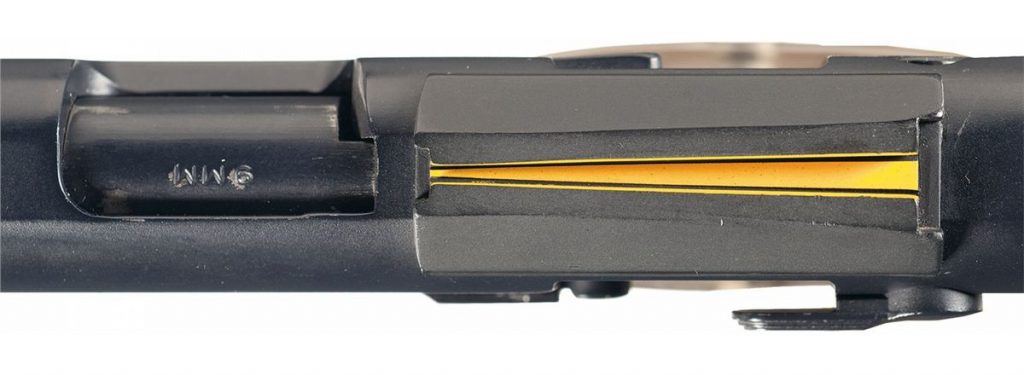
In the 1970s, AMT put out the Backup, a micro-sized pistol in numerous calibers. As the name implies, it was designed for deep carry and as a backup gun. They featured a trench sight across the top. A small company called Sterling produced the Model 302, a .22LR pocket-sized automatic with a trench sight.
Most recently, the Colt New Agent had a trench sight, which seems to be the last modern handgun to feature trench sights. They have certainly waned in popularity over time, and as point shooting disappeared from the training consciousness, trench sights went with it.
Benefits of Trench Sights
What’s the purpose of hacking sights off your gun and carving a notch in it? Well, the main benefit is tied to deep concealment. The purpose of trench sights is to eliminate snags when drawing from concealment. Sights were seen as a snag waiting to happen. Without sight, how do you aim the gun?

You carve a trench into it and then look through the trench to attempt to index the weapon in the correct orientation. They are just a step above using the end of the slide to aid. Trench sights make it easy to ensure your gun is at least pointed at the bad guy with the tip of the barrel in his general direction. It lacks the ability to give you a proper and precise sight picture.
Trench sights do promote more of a target focus than standard iron sights. Focus on the target and put the trench between you and him. That can be a faster and better way to fight, but it does limit you to extremely close range.
Do Trench Sights Work?
If you set a silhouette target at seven yards and gave me a SIG P365, I could put ten rounds into what’s essentially one area of the chest, likely grouped very close together. Put me at the same range with the same target and a pair of trench sights, and I could hit him in the chest. It likely won’t be in a tight group, but the shots would be in the chest.
They do work, at very close range, on a big target. On smaller targets and at longer ranges? Well, maybe. If the target sits still, sure, but how likely is someone to sit still in a defensive encounter? With my Sterling 302, I can hit a 10-inch gong at 15 yards most of the time.
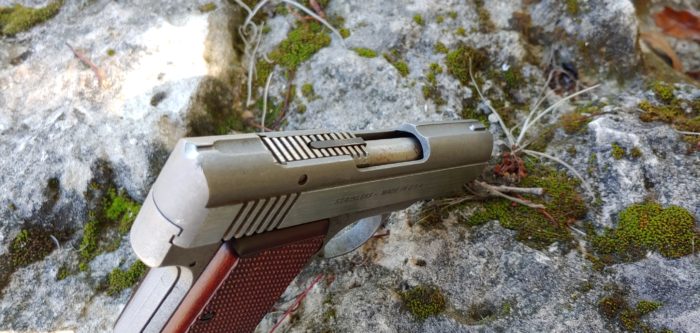
SIG and the P365SAS use something similar to a trench sight, kind of, and it might be the most usable of the trench sights out there. Honestly, with modern guns and modern holsters, the chance of a snag seems rather lower. In some real niche deep concealment situations, I guess it could happen, but it seems like the age of the trench sight is over.
(Cover Photo Courtesy of Collectors Firearms)
Just Say No To Vehicle Holsters
Oh boy, I love shotguns, but I really don’t like most people who love shotguns. Shotguns attract fuddlore and bad beliefs. I have to think that Toyota Tacoma owners feel the same way. I mention that because it always seems like Toyota Tacoma drivers are the main fans of vehicle holsters. I’m not sure why. I thought they were Big Altima Energy, but a quick search shows lots of vehicle holsters in lots of Tacomas.
Today isn’t about Tacomas. Today’s discussion is about vehicle holsters. Specifically, let’s talk about why vehicle holsters are a no-good, very bad idea. I’m hoping by the end of this article. You will ditch the vehicle holster and just carry like an adult. I try to be nice most of the time, but other times people just need to hear the truth, and I’m a care bear. An intensive care bear.
What Are Vehicle Holsters?
Let’s be clear here. A vehicle holster is a holster that attaches inside your vehicle that you drop your gun into. Maybe it’s in the cup holder. Maybe it’s attached to the center console or maybe under your steering wheel. Your vehicle is not a safe or lockbox. It’s not the holster on your body. It’s just a bad idea, and today we’ll explain why.

Ditch the Vehicle Holsters
I would love for you to just take my word for it, but that wouldn’t be very smart of you. Instead of taking my word for it, let me explain, in-depth, why exactly you should ditch your vehicle holster.
They Encourage Unnecessary Handling
The first problems vehicles holsters have is that they encourage you to needlessly handle your gun. You have to remove your pistol from your on-body holster to deposit it in the truck holster and then repeat the process when you exit the vehicle. This is a lot of admin handling that isn’t necessary. More handling is more risk inherently.
Additionally, you risk someone spotting your gun as you unholster and reholster as you run your daily errands. It just seems like a lot of extra work with no real benefit. You might whine that it’s uncomfy…to that, I say buy a better holster. Check out the Phlster Floodlight if you want a high-quality concealed carry rig.
You Might Be Breaking the Law
Depending on your state and its laws, you might be breaking the law. If your state prohibits open carry, you might be open carrying by leaving your gun exposed inside your car. In Florida, for example, a vehicle holster without an active retention device would put you in a perilous legal situation.
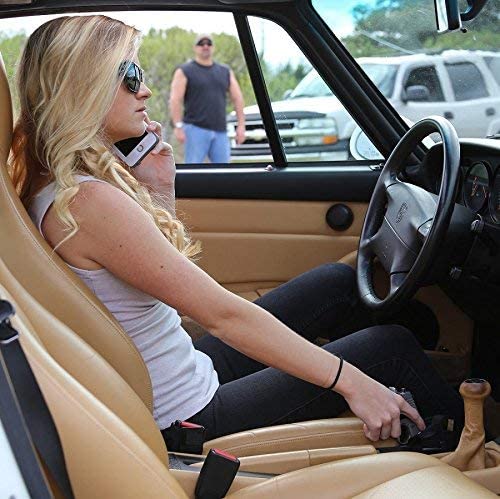
Your firearm could be considered openly carried, and you would be subject to some form of legal action. I don’t aggress with these laws by any means, but you need to be aware of them. If your state isn’t very gun friendly, then you need to be 100% sure you aren’t breaking these laws.
Turns a Vehicle Into a Loot Box
Let’s say it’s been a long day. Your boss is a jerk, you have a long, traffic-filled commute, and you plop your Xd Grip Zone first into your vehicle holster. You get a sudden craving for a sugary, carbonated beverage. You pull into a Chevron and decide to run in. You’ll be in and out. It’ll take just a second. Do you really need to strap the gun back on? You leave it…and now your vehicle is a loot box waiting for someone with sharp eyes and a rock.
I absolutely guarantee that nine out of ten people will absolutely do that at least once, if not way too often. Vehicle holsters inspire complacency. You’ll eventually leave in there, just for a minute, and potentially arm a criminal. This isn’t necessarily your vehicle holster’s fault, but it’s a symptom of their use.
People forget their living children in cars because we are not infallible. How easy is it to leave some polymer and metal in your car?
In the Event of An Accident, Your Have a Projectile That Shoots Projectiles
Over 17,000 vehicle accidents happen per day. Think about that for a second. That’s an absolute ton, and it’s statistically likely it will happen to you one day. You and your Tacoma are not exempt from other idiots on the road. Imagine you have a holster holding a gun and get into an accident.
Will your holster stay put? Will your gun stay put inside the holster? A car accident is not a good time to find that out. Imagine driving your vehicle, getting t-boned, and your gun flying across the cab. That’s not a good time for anyone. It might be completely drop-safe, but the impact isn’t the only risk. A truck full of whatever can between the gun’s trigger and cause it to fire.
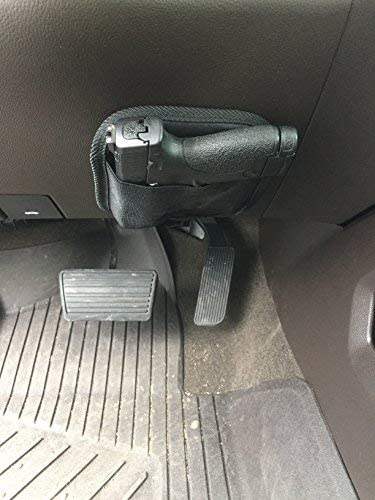
A truck flying around a vehicle is a lot like pocket-carrying without a holster. It’s a risk you shouldn’t be willing to take. This is not a good recipe. You have a projectile flying around your vehicle that shoots deadly projectiles.
Hell, what if you just have to leave your vehicle quickly? Do you have time or the wherewithal to grab your gun as you escape?
It Won’t Help You Anyway
What’s the purpose of vehicle holsters? They aren’t any faster on the draw. Sure, it might take some training, but drawing IWB, OWB, or appendix is plenty fast and just as fast as any vehicle holster can be.
If you are getting carjacked and the bad guy has the drop on you, do you think you’ll be able to draw fast enough for it to matter? Nah, and admittedly if you carried AIWB, or IWB, or OWB, you wouldn’t be able to draw fast enough on him. However, if you use a vehicle holster, he gets your car and your gun!

Let’s say he hops in your car, no weapon, just out of the blue pops in and demands your car. Maybe he yanks your door open, and you guys start getting physical. Your gun, sitting in a vehicle holster, is open for him to grab. It might be closer to you, but it’s a helluva lot more accessible to a carjacker than it would be if it was on your body.
Ditch Vehicle Holsters
Ditch vehicle holsters, ditch those stupid magnets, and don’t even get me started on that cup holder holster. It’s a bad idea with no real advantages and plenty of real-world, realistic disadvantages. If I’m wrong, pipe up in the comments, but please explain your position succinctly. Maybe you can change my mind, but I doubt it.
Final Rule ATF 2021-05F: The BATFE on 80% Frames
FINAL RULE ATF: Last week, the BATFE issued new guidance on the legality of 80% frame lowers like those manufactured by Polymer 80, Lone Wolf Arms, Nomad Defense, and Matrix Arms. It’s rarely a Good Thing when we have to report ATF news, and this time is no different.
ATF Changes its Mind. Again.
Once again, the Federal Bureau of Alcohol, Tobacco, Firearms, and Explosives (ATF) has changed its mind. Remember how 80 percent frames and lowers were legal until Joe Biden’s ATF decided that they weren’t? You know, like the ATF always does.
That question was shaking out as part of the Vanderstok v. Garland case in federal court, with the ATF agreeing that the frames and receivers in question were indeed legal so long as they didn’t ship with “associated templates, jigs, molds, equipment, tools, instructions, guides, or marketing materials.”
So, basically, the frames and receivers are only firearms under the Gun Control Act (GCA) if they are packaged with those “non-firearm objects” (NFO). Strange, but okay. Companies had already incorporated that change and were continuing to ship their products. NFO sold separately.
Then, out of the blue, ATF dropped a new rule on FFLs by way of a December 27 open letter. The letter stated that “these partially complete pistol frames are ‘frames’ and ‘firearms’ as defined in the GCA and its implementing regulations.” Even if they don’t include the NFO items.
ATF bases this change on the definition of the word “readily,” as in whether these frames can be “readily converted” to fully functioning firearms.
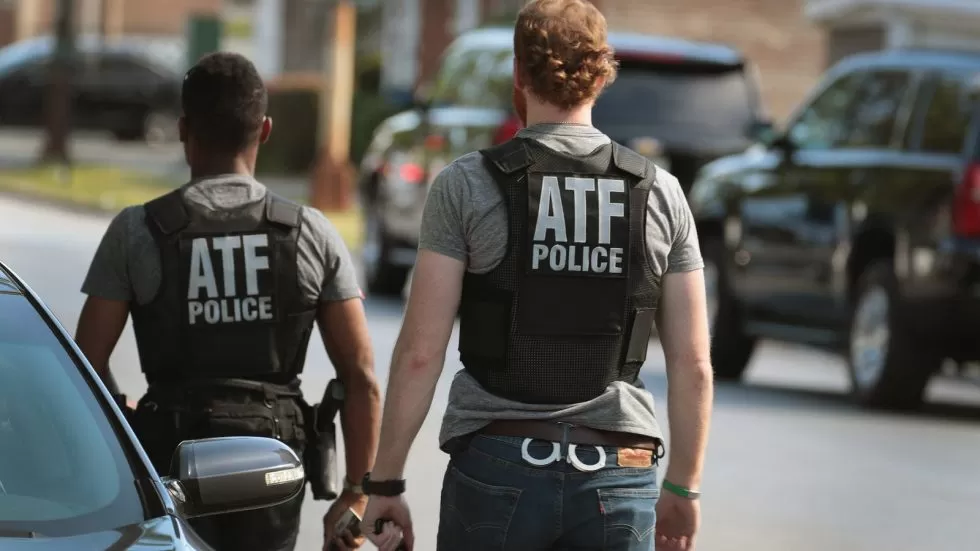
Here’s an excerpt from that statement:
Applying the regulatory text of Final Rule 2021-05F, partially complete Polymer80, Lone Wolf, and similar striker-fired semiautomatic pistol frames, including, but not limited to, those sold within parts kits, have reached a stage of manufacture where they “may readily be completed, assembled, restored, or otherwise converted” to a functional frame. This definition of “readily” applies to each and every classification of a partially complete frame or receiver under this Rule, whether sold alone or as part of a kit. Therefore, even without any associated templates, jigs, molds, equipment, tools, instructions, guides, or marketing materials, these partially complete pistol frames are “frames” and also “firearms” as defined in the GCA and its implementing regulations, 18 U.S.C. § 921(a)(3)(B) and 27 CFR 478.12(a)(1), (c).
The following are some examples of companies that build 80% frames.
Now learn about the sizes of handguns!
Why Small Revolvers Are Still Relevant
The Duty Revolver: Too Slow & Too Old
This would not be the first time I mention in passing that the glory days of the double action service revolver are long past us. Revolvers are wonderful handguns and excuse the cliché, but they really were the more elegant weapons from a more civilized age. However, accurate as they may be, service revolvers are heavy for their size, hold fewer cartridges and achieving proficiency requires more time and skill compared to semi-autos. Due to their “exposed” architecture, more care and cleaning is needed in between shooting sessions.
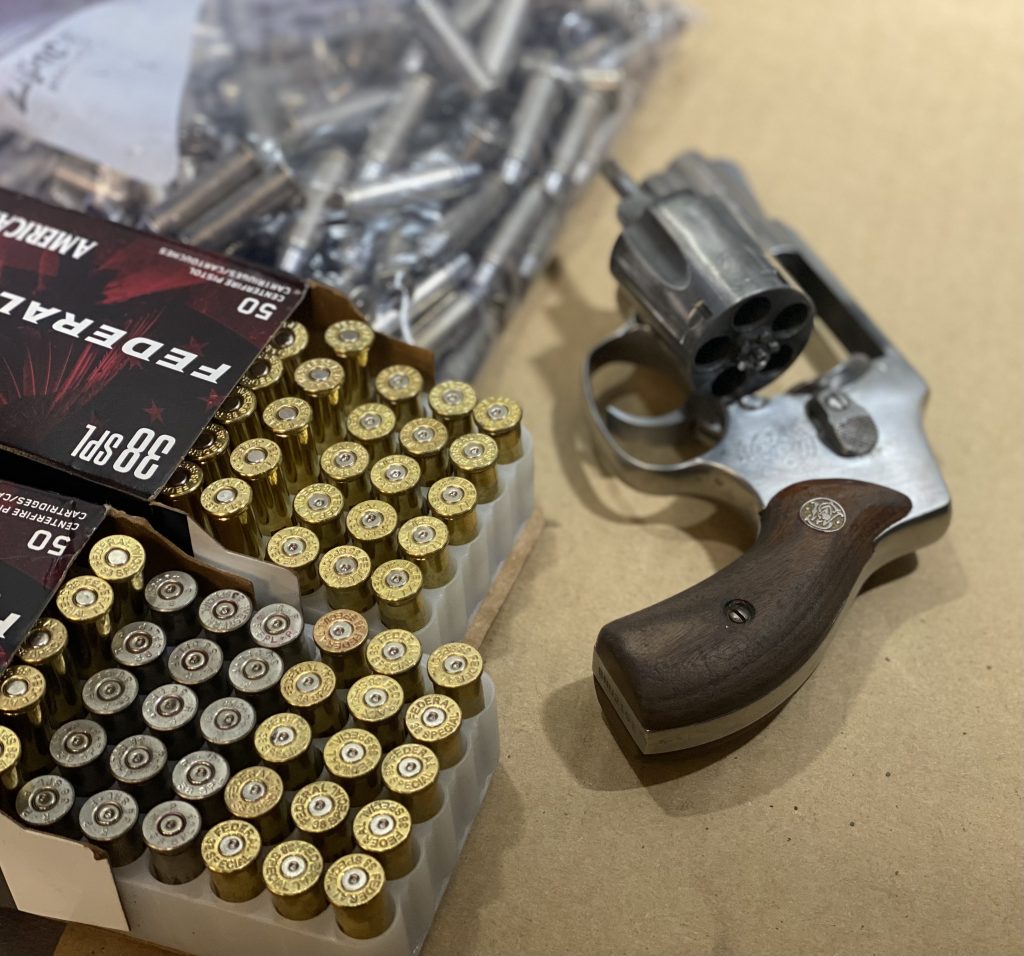
Big revolvers are on the cusp of obsolescence, but the small compact BUGs (back up gun)/pocket/snub nosed revolvers are not going away any time soon. They carry quite easily, their capacity is nearly equivalent to semi-auto sub compacts of their size and they offer performance benefits that those semi-autos cannot.
The Pocket Rocket And Its Niche
Compact revolvers are nothing new. They have been around for the better part of a century offering carriers convenience due to their size and portability. Major manufacturers still do brisk business selling them across all price points in calibers like .22, .32, .38, and 9mm. The typical pocket rocket has a 2-inch barrel along with fixed sights, stubby grips and a payload of 5 or 6 rounds. The trade-ff between their size is that they are objectively more challenging to shoot well. For starters, they are not the best at soaking up felt recoil because they are smaller. Executing precise shots takes some skill, especially at further distances (the dinky grips and shorter sight radius do not make it easy). If a duty sized revolver is slow to reload, a pocket revolver is even slower because of its size.

Get Off Of Me!
All things considered, these pocket revolvers remain relevant because they shine in extremely close ranges. It helps to think of these firearms more of portable close-in bullet dispensers rather than shooting guns designed to hit targets at a distance, so these guns do not really need sophisticated sights. Their entire payload is self contained and these guns are not dependent on any external magazine, so the risk of the magazine becoming separated from the gun during an entanglement isn’t there. These small revolvers can also cycle in enclosed spaces and do not need extra clearance for a slide to reciprocate. Assuming a bobbed hammer or hammerless frame, their shape makes them very useful for snag-free draws from pockets holsters or other less conventional spots where a full size gun would never be carried. They also lack the squared off “back” of a small pocket semi auto which is also prone to snagging. The reality is that every self-defense situation is unique and cannot truly be rehearsed or choreographed. Often times fights end up on the ground and turn into messy, armed entanglements. A small firearm that can be accessed from a pocket or the front of the hips and that can empty its entire payload in a tight less than ideal space is something to think about.
Options for Women’s Range Pants..That are Still Feminine
Gone are the days that shooters want to actually look like they are going to the range. Those khaki cargo pants with the large ugly pockets draws attention and just isn’t attractive. This goes for women and…men. (Yup, you guys don’t look great either) So what are womens options that still give protection to our skin, the ability to stretch and move, and look good? Here is what I have found (and still wear) to be comfortable pants with enough pockets to get the job done and still make me look like a feminine outdoorsman. Yes, with belt loops too.
Note: These will be organized by pant material and season. I will also put my size as a comparison. I am 5’2 and 130 lbs.
Thin Material/Summer Pants
Kuhl Horizon Skinny
Price: $85.00
My Size: Size 4-32 inseam
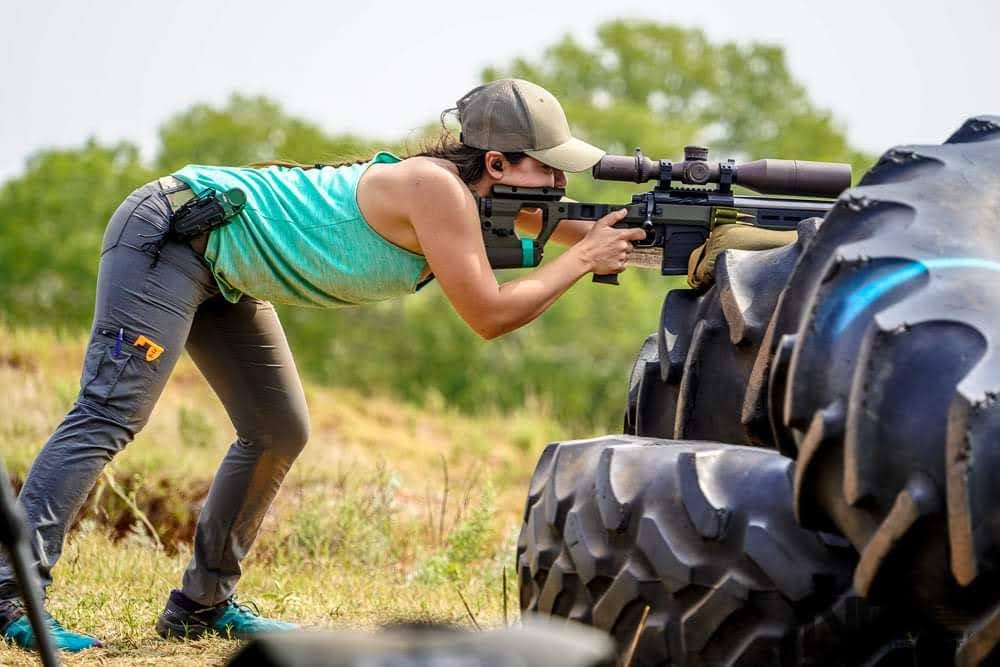
Outdoor Research Ferrosi Pants
Price: $89.00
My Size: Size 4-Regular

Medium Material/Spring and Fall Pants
Duluth Trading Company Women’s Flexpedition Bootcut Pants
Price: $79.50
My Size: Size 4-31 inseam
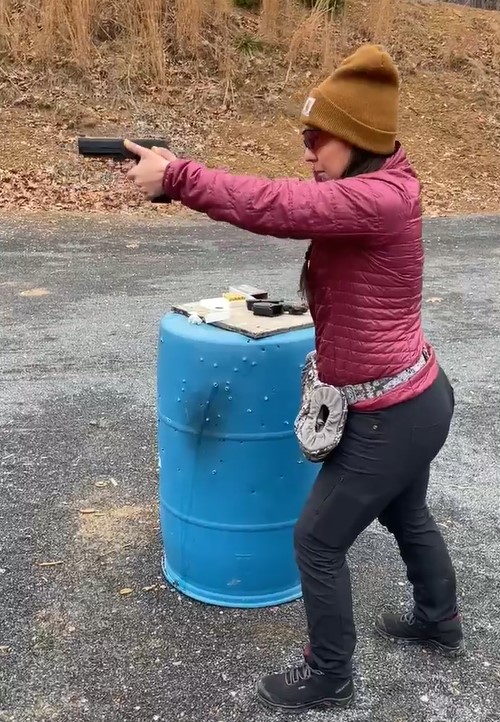
Duluth Trading Company AKHG Roadless Slim Leg Pants
Price: $89.50
My Size: 4-Regular
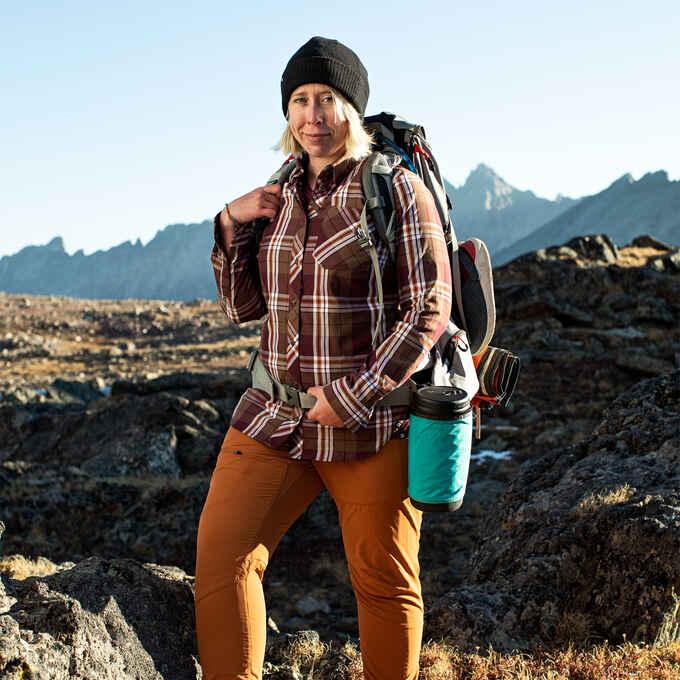
Photo: Duluth Trading Company
Note: Both of these pants also come in a fleece lined style.
Vertx Kesher Ops Pant
Price:$75.99
My Size: 4-32 inseam

Thick Material/Winter Pants
Outdoor Research Methow Pants
Price: $119.00
My Size: Size 4-Regular

Photo: OutdoorResearch
Duluth Trading Company DuluthFlex Fire Hose Relaxed Fit Pants
Price: $79.50
My Size: 4-31 inseam
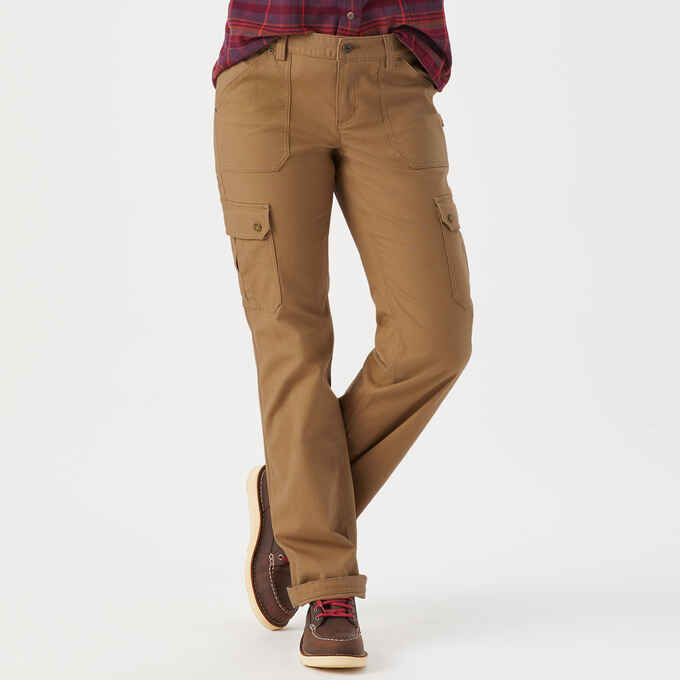
Photo: Duluth Trading Co
The Five Craziest Books from Paladin Press
Paladin Press was an interesting company. They published a ton of books. A lot of them were from some very respected military and police sources. People like Rex Applegate and Sykes and Fairbairn have books published by Paladin Press or reprinted, at the very least. They covered interesting topics like dealing with surveillance and bugs.
They also published some straight-up mall ninja-like rubbish. Some of their books were harmless and silly, fodder for teenage boys. Others were, for lack of a better term, bat poop crazy. I’ve gathered and regrettably spent a ton of time reading their books and have settled on five that are funny, crazy, and controversial.
Weapons of the Street
Weapons of the Street greets you with three surly-looking tough guys all armed with some form of weapon. As you dive into this manual, you learn how to use and defend yourself with Weapons of the Street! You get goofy photos and seemingly complicated techniques explained in about a paragraph about how to use and defend yourself from clubs, bike chains, and more.
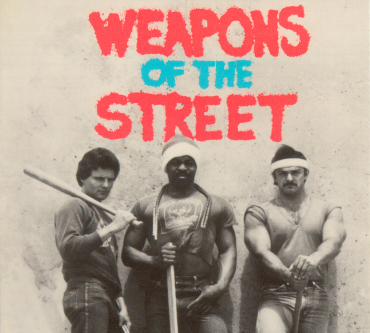
My favorite parts included using a chain to wrap around the bad guy’s leg and then tripping him. This is taught as a viable technique in a street fight when you are facing your enemy, just whip the chain around his leg and trip him! My second favorite is in the end.
If you’re approached by three, although the book advises it works on two bad guys, raise your hands up like you are going to surrender! As they approach, reach for the .38 Special in your pants! It never tells you why you should fake surrender and effectively decrease your draw time.
The Sling for Sport and Survival
I started looking through this book because I like weird weapons, specifically primitive weapons. It’s the book that inspired this article, actually. As the name implies, it’s about the Sling and its use for sport and survival. I can buy it as a valid hunting tool, and it’s been proven effective for hundreds of years.
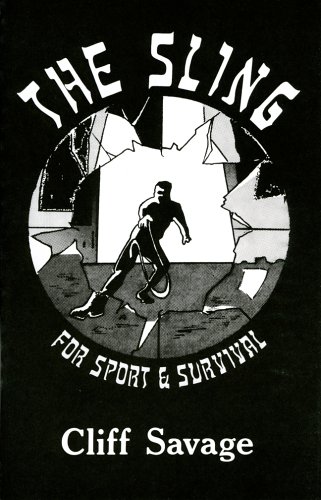
Where this book and Paladin Press lose me is near the end in a section called “Urban Warfare.” There the book takes a turn and declares the sling is becoming a preferred weapon for urban survival and warfare. Admittedly I wasn’t fighting in urban battles when this book was published, but I’m pressing X to doubt.
According to this book, you aren’t even properly armed without a sling. In fact, in urban warfare, there is “no substitute for the sling.”
The Death Dealer’s Manual
The Death Dealer’s Manual promises you a book written after decades of real-world research. It will make you a professional killer! For example, it gives you advice like handguns are great close-range weapons. Also, did you know that if you shoot someone in the head, they’ll die? Obviously, we get a whole chapter on knife fighting.
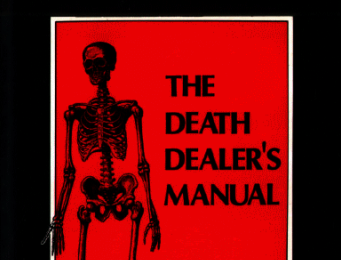
Don’t worry. It’s all legitimate information. You see, a real mafia hitman was consulted by Paladin Press to write this book. Seriously, they didn’t just make that up. You can’t lie in books. The .22LR is the best weapon for a hitman, too, according to this book. Glaser Safety Slugs are also the superior ammo choice.
The book is full of common sense stuff like headshots are effective, and also a ton of B.S. stuff like the zipper fire technique where you start aiming at the belly button and squeeze off ten shots as fast as possible, and the muzzle rise will allow you to end up shooting them in the head, as well as the body. Like the Hit Man manual is the cringy stuff you hear at certain gun stores.
Manual Of The Mercenary Soldier
Do you want to be a mercenary? I bet so. That collection of Soldier of Fortune magazines will finally see some use. If you wanted to be a merc, Paladin Press sold the Manual of the Mercenary Soldier, written by Paul Balor, with a cover that’s graced by actual mercenary Mitch Werbell the third.
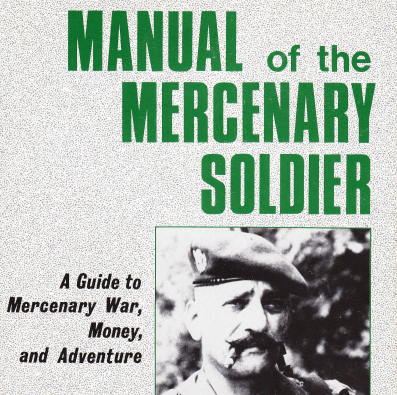
Was Paul a mercenary? It doesn’t seem so, and he only ever wrote this one text. It’s full of empty advice. The author says do this but doesn’t mention how to even start doing whatever this may be. The book dives into tactics, and it’s just fluff and useless information you already know and a diatribe about Lawrence of Arabia. It doesn’t actually teach you how to conduct an ambush.
Will this book make you a mercenary? Nah, but there are some interesting historical tidbits. This reads like someone who knows a fair bit of martial history but nothing about on-the-ground warfare and tactics. In true Paladin Press fashion, there is a lot of knife fighting advised.
The Hit Man – A Technical Manual for Independent Contractors
I wrote an entire article about this guide. It is supposedly written by a real hit man who spells hitman hit man. Rex Feral, the author, writes an entire book advising you on the arts of being a hit man. Much like the Merc Manual, the guidebook is pretty skinny on actual advice. It tells you the obvious things about becoming a hit man but offers no practical advice on how to do so.
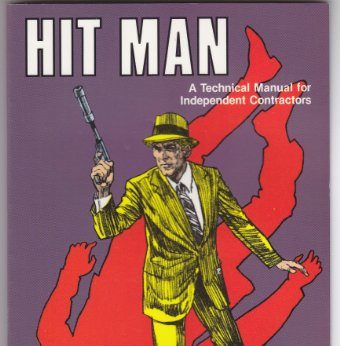
Most of the advice is comically bad, and it’s one of the first times I saw the phrase “Killed in the streets” in regard to sport karate. The advice is honestly pretty bad, and none of it makes a ton of sense. However, the book was used by a man who actually killed a few people, and he supposedly followed the manual’s advice. I guess that explains why he was caught and convicted so easily.
The book has quite a history and was effectively banned via a lawsuit. The ban didn’t make the book illegal, but Paladin Press agreed to destroy their remaining copies and not print any additional copies.
The End Of Paladin Press
Paladin Press published a good bit of rubbish alongside some fairly awesome manuals. Sadly, they are no more and have shuttered their doors. With them, they took their publishing catalog and even their eBooks. Paladin Press was fearless, and I doubt we’ll see another company like them ever again.
HAPPY NEW YEAR!
Another full orbit around the giant shinny heat ball.
We’ve had a rough few years now between the pandemic, politics, and a land war in Eastern Europe all taking international attention and effort.
Here at home we saw the results of the pandemic measures crunch the economy, trigger migrations, spike inflation, and all sorts of wonderful stress inducing events.
But it hasn’t all been bad news.
The Supreme Court ruled on Bruen, heavily in favor of 2nd Amendment rights and the ripple effects of that decision are going to be cracking cases open for years to come. States have panic and protest passed legislation that is highly unlikely to survive Bruen’s standard for scrutiny.
Seethe and cope, Anti’s, seethe and cope.
2023 comes with a lot of uncertainties, but that’s nothing new from every year we’ve been through previously. We don’t know what will happen but we can work it out.
Despite Joe and Co. in the White House, the House of Representatives is going to gridlock and serious anti-gun legislation handily and the only card the Democrats can keep playing is the ‘we’re trying, stupid Republicans blah blah blah’ and from what I’ve seen coming from the anti-gun bases, that trick is getting old.
Bruen is a mighty hammer that may finally see the dismantling of the statist and stupid legal power dynamics that allowed ‘Assault Weapon’ bans and ‘High Capacity’ magazine bans to linger in their fetid states of being for this long. We might see some sanity return the the gun debate because the legislatures will have to use evidence instead of playing the ‘in the interest of the state’ card to justify keeping bad policy in place. ‘Interest of the State’ has been nothing but a cry of ‘It’s supposed to be a good thing, it isn’t working but it is supposed to’ in order to defend crap policy.
I want to see those policies die. I want to see them buried in shallow graves with headstones reading ‘they tried, badly but they tried’ over top of them. I want to see the demise of the ‘moralistic’ policy that always seems to cause far more harm than good, I want to see those policies replaced with ones that have at least the barest passable logic tree run on their intended and unintended consequences.
But most of all in 23, I just want to see everyone chill out a little. Relax. Touch the grass. Eat a snack. Work on the projects you can solve and help influence. Just relax, things are getting better as long as we’re working on them to be.
The SIG P320-XTEN: A 10mm that is Female Friendly
Finally, the firearms industry starting to catch up to the fact that everyone is different. Not meaning female vs male, but big hands vs small hands, etc etc. The firearms that are coming out that are dubbed “female” or F-Series, looking at you Walther, is not because it is only made for a female, but that it is female friendly due to allowing smaller hands and different strength levels to employ it properly. The SIG P320-XTEN does the same with easy to use controls and recoil of a 10mm that is barely there. I know, I didn’t believe it at first either..
The SIG P320-XTEN
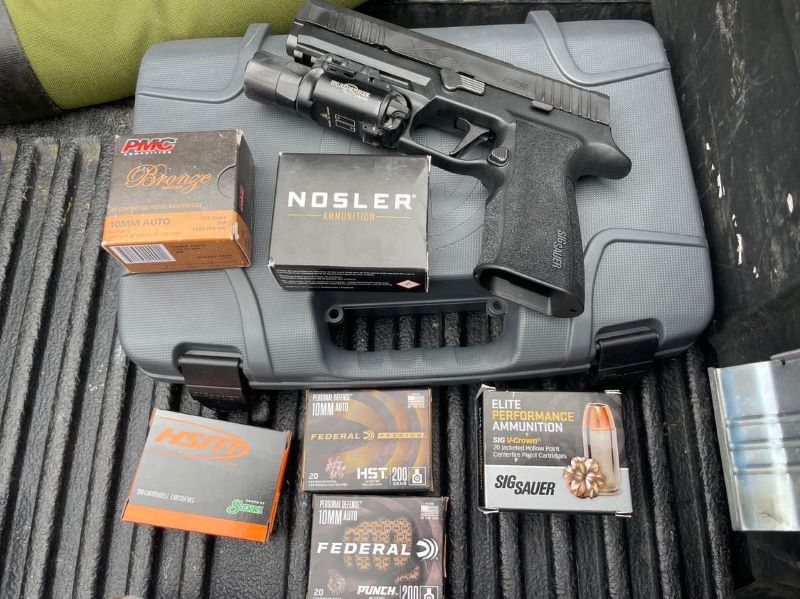
“The latest addition to the SIG P320 family brings all of the features of the XSeries into a carry-style handgun in 10mm for shooters and hunters looking for performance to the power of 10…To reduce the recoil, a completely redesigned XSeries polymer grip module provides a strong purchase and stippled finish and makes shooting comfortable for any type of round. Each P320-XTEN comes standard with two 15-rd magazines. The new SIG P320-XTEN takes performance to the power of 10.” -Sig Sauer
Specs
- Caliber: 10mm Auto
- Sights: X-RAY3 Day/Night Sights
- Barrel Length: 5 in.
- Weight: 33 Oz.
- Accessory Rail: Yes
- Trigger Action: Striker
- Trigger Type: XSeries Straight
- Grip Module: Full-Size Polymer XSeries
- Barrel Material: Carbon Steel
- Slide Material/Finish: Stainless Steel w/ Nitron Finish
- Optic Ready?: Yes

The Controls
When it comes to smaller hands and handguns there are some things that immediately give the shooter trouble.
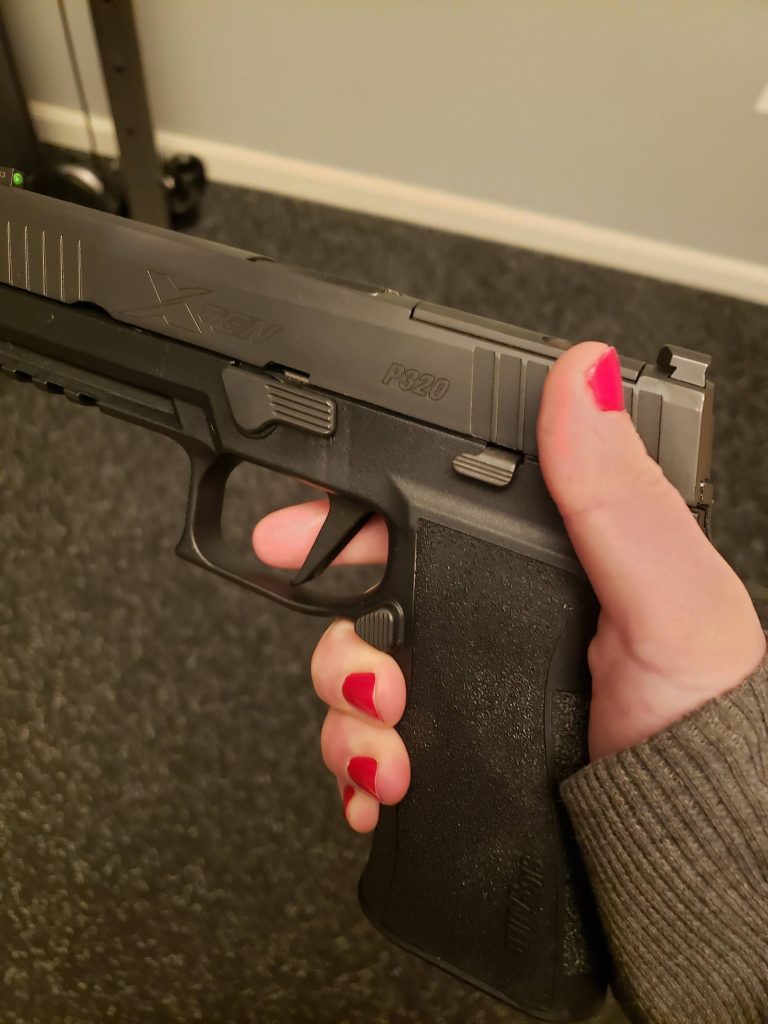
The Slide Release
The slide release on a handgun can be difficult for two reasons. One, the shooter can’t reach it. Often times our thumbs won’t be able to get to the release without breaking our grip, and if it does get to the release we won’t have enough purchase on it to actually press it. Which leads to the second issue, the strength it takes to press it. Slide releases are weird because if the slide cut where the release fits into is too deep, we have to press down more, too small of a cutout and the slide doesn’t stay locked. Same with the slide release spring, too hard and the release can’t be pushed, too soft and it falls out of the slide. A third issue, the release not being far enough away from the slide to actually get purchase on it or the release not being ribbed for our pleasure.. (too much?) or in appropriate terms not having any ridges to allow our thumb to catch on it.
Now to combat these issues there are mods out there such as the Kagwerks Extended and Raised Slide Release for Glocks and other aftermarket mods. For the P320-XTEN though, no mods are needed.
Immediately my small hands were able to reach the slide release without breaking grip, press it with ease, and my thumb was not slipping off. The slide release is designed so that it is angled away from the slide at almost a 45 degree angle. It has three ridges. If I were to have this modified I would deepen those ridges or stipple it due to it almost resembling the Glock ridged slide release which can cause issues with sweat or during rain. The spring is really what makes the release easy to use as it is a lighter spring making it easier to press the release. I do wonder if that will ever wear out over time due to the lightness of it.

Eye Protection: Revision I-VIS
Racking the Slide
Smaller and weaker hands often have a hard time with racking the slide of a handgun and most beginner firearms handling classes will go over this specifically. They will teach a push push method. Push with the grip hand as you overhand the slide and push. This is mainly the method I have always done, the overhand on the front of the slide full hand rack method. Often though we don’t see many professional shooters use this method. They more so do the pinch the front of the slide, which is the reasons for serrations. Well I’m happy to announce that this is the FIRST HANDGUN I’ve been able to get it down with. The serrations are deep and wide enough and the slide is easy enough to push. Small and weaker hands will have zero issues with slide racking no matter the method you choose.
Reaching the Trigger
Small hands mean small fingers, and small fingers mean that they will often have a hard time reaching the trigger. When shooters have a hard time reaching the trigger this means that they will also have a hard time pressing it in a comfortable and straight to the rear fashion. They will usually only get the very left of their finger on it and won’t be able to find that comfortable spot on the meat or first inside knuckle (whatever you prefer because there is no right way for everyone). A fatter grip module that pushes the trigger finger even further from the trigger just adds to the problem as well. I had zero issue with the XTEN.
The XTEN features their X Series Straight Trigger. Pair that with their ergonomically friendly skinnier grip and you can easily reach and bypass the trigger, allowing you to find the comfortable spot on your finger of where to press the trigger. You are not forced to press the trigger any certain way due to having room to play.

Mag Release
An ergonomically friendly grip and a well designed mag release also help fix the issue of needing to press the mag release and not break grip. The mag release is pushed far enough away from the grip that the thumb doesn’t lose it, It is also easy to press and the triangle shape allows you to use the corner of your thumb to press it. The mag release has a bit deeper ridges than the slide release.
The Recoil
So, this is a 10mm right? Big, powerful, not fun to shoot. My personal experience with 10mm was when I shot a Glock 20 and the gun was so large that it was intimidating from the start. With all of that mass it didn’t eat the recoil as I thought it would either..
The SIG P320-XTEN is exactly what the name shows. A P320 in a different caliber. It has a polymer frame, reminds us of a normal 9mm firearm, and still eats the recoil of a 10mm up. Before I had my own XTEN I shot one at a stage at a match. The SIG guys working the stage stated that women have said that they didn’t know they were shooting 10mm until they were told. I believe it with how well I was able to shoot this 10mm right off the bat. To test just how well I could handle the recoil I shot some 25yd B8’s and shot some normal drills that anyone would shoot with 9mm.
B8’s

Shooting Drills
With the shooting drills I wanted to see how well I could stay on the sights during recoil and keep the grip during quick follow up engagements.
Note: If I could change another thing about the firearm it would be the day/night iron sights. Both the front and rear sights have a green color to them, so the front gets lost. The front also has two colors green, a green ring around a green dot. This turns into a big green blob pretty quickly. So instead of just focusing on putting front on target, it kind of just all blobs together (in the most technical terms..)
Easy Holster and Optic Options
The P320-XTEN makes it easy to start shooting and carrying. Since it is the 320 frame shooters can throw on a light and place it into any light compatible holster and go. For this shooting I used a BLACKHAWK Omnivore and just threw a X300U onto the gun. The slide is also RMR compatible which are easy to find online, or on our shelves just waiting for a gun to put on.
To Purchase
To purchase, find a local dealer near you.
A Few Word On Wound Ballistics
Wound ballistics are an interesting study. I will state forcefully that lab results in carefully detailed experiments show the differences in calibers and load much more exactly than studying human wounds. The study of gunshot wounds is beneficial but not easily repeatable. We have lab results and then we have the magical world of ‘shooting histories’. These so called stopping power studies- if the events took place at all- are a product of the imagination in most cases. They are conducted by rascals to impress fools for the most part to quote Colonel Cooper. Some even claimed to shoot goats in a controlled test. Secret sources are highly suspect! Most so called studies do not have the valid elements to be included in a small town traffic court as testimony. I am going to illustrate some of the more interesting cases I ran across and studied to illustrate the randomness of wound ballistic study. As an aside- as a young officer I attended quite a few autopsies. Some were well conducted, others were quite crude. The object was more to retrieve the bullet for examination than to discover what type of damage was done.
On one occasion my cousin, a chief of police, and I had left the morgue after a morning autopsy. I was a patrol lieutenant at the time. There is a reason that the stiffs are kept cold. The smell is overpowering. The smell as you enter a prison or a mental ward is often over powering, but the smell of a morgue is perhaps the most unforgettable. We were attending to lunch when a nearby patron went to the manager and complained of a bad smell. Perhaps the trash needed to be emptied. My cousin looked at me and said ‘My God it is us!’ We quickly finished our meal and left. Some smells linger.

I once attempted to make sense of a case from about 1880. The doctor reported a handgun ‘worth about sixteen dollars’ had been used. The bullet entered the chest, struck the heart, and caused immediate death. The bullet had penetrated about eight inches. Nothing further. That is worthless information. The wound appeared to be from a .31 caliber black powder revolver. Another detailed look at a famous case yielded more information. An assassin had fired two shots with a Browning 1910 .380 ACP pistol. This isn’t the easiest pistol to use well. I have fired one of these well made little handguns. The recoil is more than you would expect and the sights are just a groove in the top strap. The accuracy of the shooter was surprising. The two quick shots struck the man in the throat killing him. His wife was struck in the abdomen causing almost immediate death. Archduke Ferdinand was dead and so began World War One.
The gangster era showed that men can take a lot of shooting and keep going. Some were riddled into a sieve and finally succumbed. The era of 1945 to 1950 also yielded detailed results. In two cases that occurred within a few month of the other I isolated incidents in which the .32 ACP cartridge performed far above expectation. Yet each examination was very well detailed. In fact they had to be as one was politically important and the other resulted in a murder trail in which three people were executed. In the first the entire Sheriff’s department of a rural southern county was wiped out- the Sheriff and his sole deputy. They were serving a murder warrant on a man and women. The house was crowded with relatives. The two lawmen were waiting in a large common room. The woman was in the kitchen with relatives. We studied this case as I earned my degree in Criminal Justice as the wrong way to serve a warrant. The man to be arrested was allowed to go into the bedroom alone to change clothes.
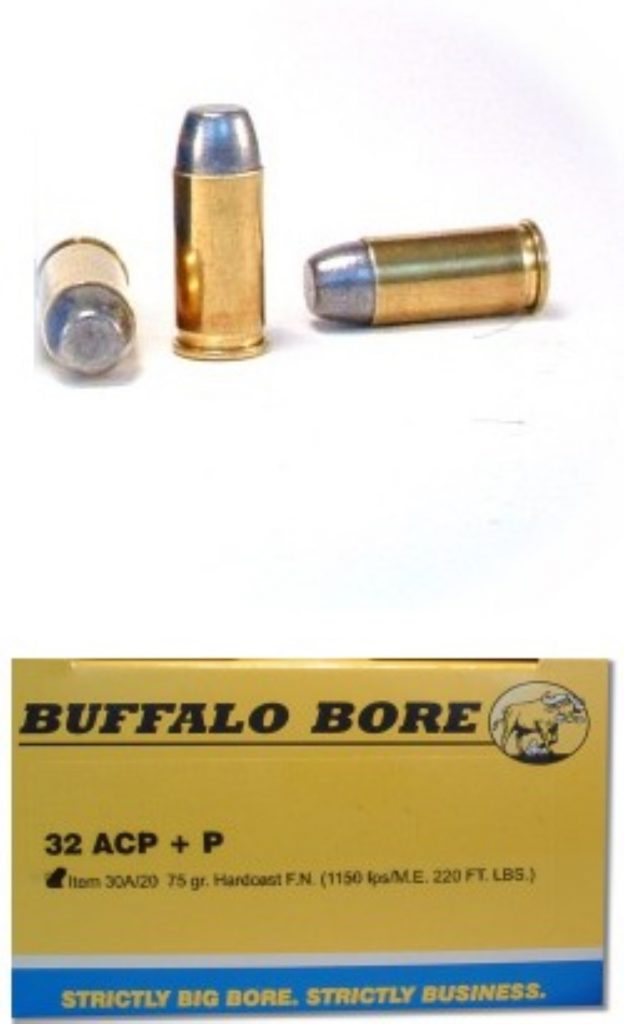
As the lawmen waited a field hand- and another cousin-came into the home through the kitchen. He had in hand a .410 bore shotgun. He fired at the deputy. The deputy stood in the middle of the common room. The deputy was struck in the left arm with birdshot at less than twenty feet. According to the autopsy the wound was ‘slight’ with little penetration. The deputy drew is .38 and fired. The attacker was struck twice- load unspecified- and dropped. He lived. Meanwhile the man in the bedroom had armed himself with a Colt .32 ACP pistol. At less than twenty feet he fired and stuck the Sheriff in the face instantly killing him. A second shot struck the deputy in the abdomen. The deputy shot the shooter in the stomach, dropping him. He lived. The deputy survived long enough to give a detailed account of the shooting. He went into surgery with the doctor giving his family high hopes for recovery, but died on the operating table. Two lawmen killed with a single shot each from a .32 ACP and two shooters survived .38 hits.
Another case was extremely well documented as to the events and the wound. A noted Japanese war criminal was to be arrested outside Tokyo. He refused entry when Army Military Intelligence arrived at his home outside Tokyo. The man had lost much face due to his conduct of the war. His failed suicide attempt would cause him to be ridiculed in Japan as his hari kari was unsuccessful. He shot himself with a Colt .32 ACP pistol. The Colt has been ordered in large numbers by Japanese officers prior to World War Two. Light, reliable and about as powerful as the 8mm Nambu service pistol the Colt was a common pistol in Japan. The officer did not use a sword as honor demanded and neither did he use the pistol to its best effect. He placed the Colt muzzle in a position on his body where the ceremonial sword cut should have begun. The shot rendered him unconscious and helpless, the bullet traveling through his body and exiting. The bullet missed the heart. There was great blood loss and the opening on his back was a measured six inches long and narrow on the other axis.
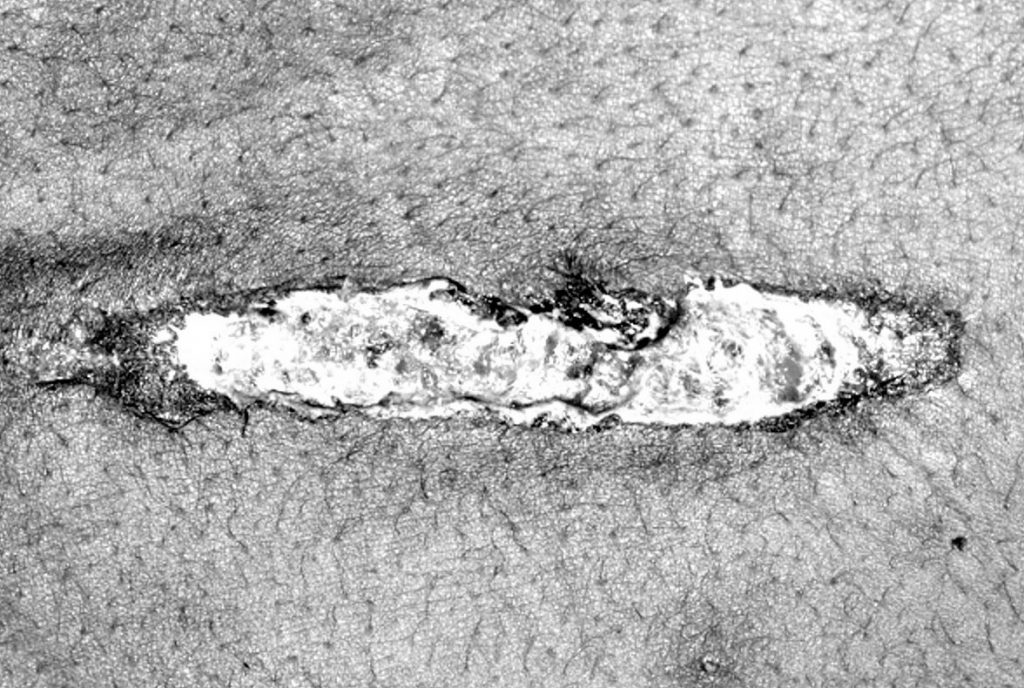
The intelligence men knocked the door down. A doctor was summoned and would only render first aid. At the hospital surgery was performed and the man lived. Uncharacteristically humble he told the doctor why bother I am a dead man. He lived long enough – three more years- and recovered, then was tried and hung for war crimes. So died Hediki Tojo. These incidents are interesting. Let the editor know if you find these interesting. I have many more.
The Colt Derringers – Little Gun, Little Cartridge, Big Sales
When the metallic cartridge became the next big thing in firearms, Colt needed to play a game of catch-up. This was a few years after the Civil War, and Colt had been producing guns like crazy to arm Union soldiers. Colt wanted to produce more modern cartridge revolvers, but Rollin White and S&W owned a patent for rear-loading revolvers. They wanted to sell the patent for 1.1 million dollars, and Colt decided that was too much for a patent that expired in 1868. This eventually led to the production of Colt derringers.
Well, most weren’t Colts. Colt acquired the National Arms Company in 1870, and the National Arms Company was a producer of derringers, specifically metallic cartridge derringers. This allowed Colt to enter the metallic cartridge market. Colt continued to produce the .41 Short, aka the .41 Rimfire derringers, for the commercial market. These became the first metallic cartridge firearms produced and sold by Colt.
Colt Derringers Inside and Out
Colt produced three models of the gun. Typically when one says derringer, they picture a double-barreled firearm, but that’s not exactly the case with most derringers of the day. Remington produced the famous two-shot derringers, but most were single-shot designs. This includes the Colt derringers.
The various Colt derringers are divided into various numbered models. The primary models are the 1st, 2nd, and 3rd models. These were the wild west style handguns in .41 rimfire. The first two designs were entirely National Arms Company designs.
The Colt Derringers
The Colt 1st Model derringers were the smallest models that featured a short barrel and a one-piece frame and grip combination. The original grip and frame models were made from brass, but this would later change to iron when Colt ran out of surplus National Arms Company parts. The barrels were 2.5 inches long, and the gun was made entirely from metal. The barrel rotated to the side and downward for the ejection of empty cases and reloading.
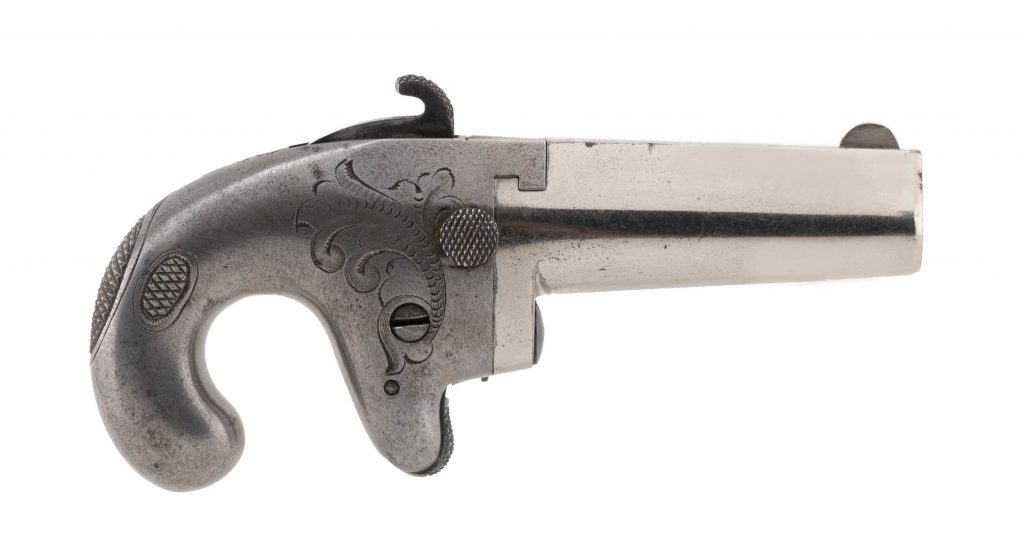
The Colt 2nd Model derringers were also National Arms Company designs, and early models featured brass frames which were soon swapped to iron frames as surplus parts ran out. The grips were made from wood which was a big change from the first model. Both the 1st and 2nd model guns were produced concurrently for Colt. They featured the same side opening and rotating barrel.
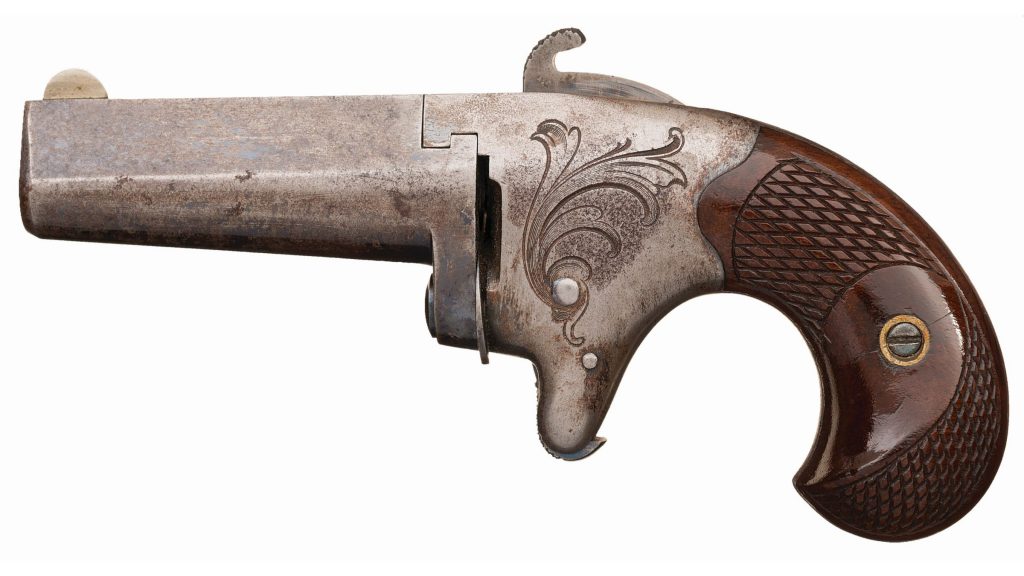
The third model Colt derringers, changed things a bit. These featured innovations from Andrew Thuer, a Colt employee. These guns have a brass frame which is either nickel or bare. The barrel was steel and either blued or nickel plated. These remained .41 rimfire guns, but the gun was a bit simpler with a side-opening barrel. These remained in production until 1912.
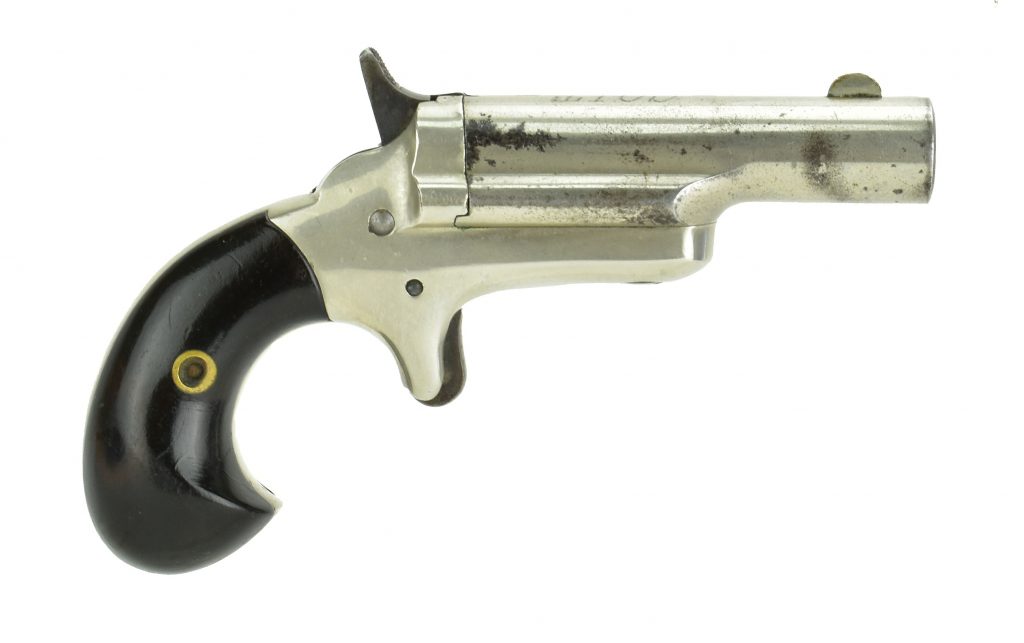
The 4th model Colt Derringers began production in the 1950s and made it to market due to the popularity of western movies. These guns are nearly identical to the 3rd model derringers but were only produced in .22 Short. Colt actually didn’t make these guns, but a company called Butler did so.
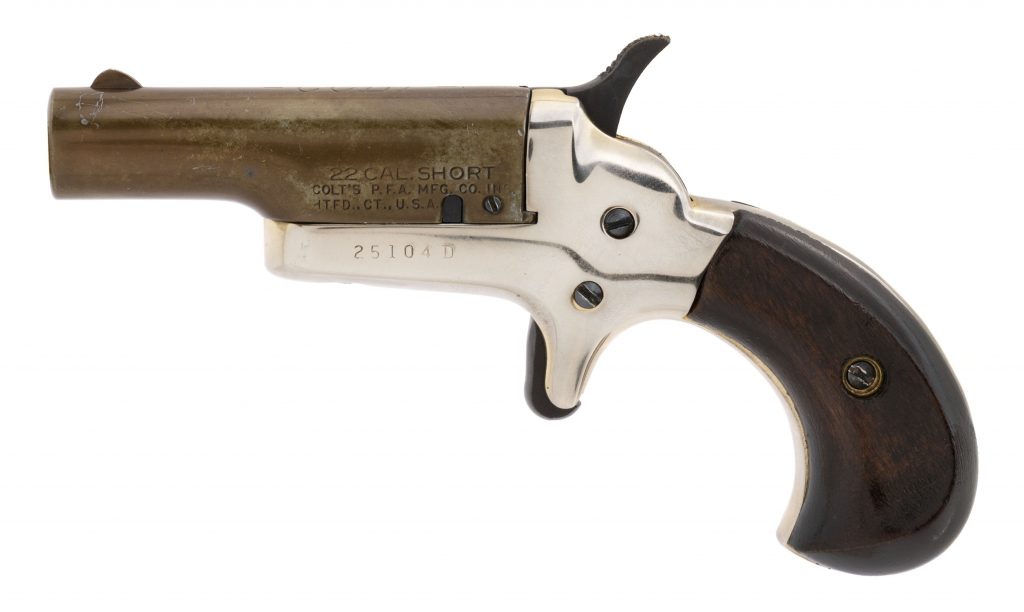
The .41 Rimfire
The .41 Rimfire, aka the .41 Short, was the round of choice for Colt derringers. It was designed from the ground up as a cartridge for derringers. It was a rather anemic round when compared to modern ammunition. The little 130-grain round was only moving at around 680 feet per second at best. It wasn’t superbly powerful, but from a teeny tiny pistol at a time when modern medicine sucked. You didn’t always just walk away from the blast of Colt derringers.
It would be a popular cartridge outside of Colt derringers and would find its way into Remington Model 95 and later the Colt New Line pocket revolver. It was never superbly popular but found its way into a number of very small pistols.
One Round At a Time
The little Colts were fairly successful guns for Colt. They allowed Colt to meet a new market and provide super small pocket pistols in a common caliber for the time. While the Colt SAA and 1911 are the most famed of the designs, the Colt derringers allowed Colt to break into the metallic cartridge market. These days they would be quite anemic, but at the time represented a popular option for concealed carry.
“What the Debate Over Guns Tells Us About America” – Politico Opines

Over at Politico, Professor of Law Sheryll Cashin has given us an opinion upon the firearms debate as we passed the anniversary of Sandy Hook. She is a professor of law at Georgetown and the author of several books on racial justice and American democracy…
Sheryll Cashin is a law professor at Georgetown University and author of several books on racial justice and American democracy.
In other words, the subheading hopes to establish that she is very smart and that all of these opinions are probably the right opinions. At the least they are worth considering in a positive light. Except we all know how that goes in academia and medicine these days. We use someone’s genuine expertise and authority, as a surgeon or historical legal expert, to then give them authority over a thing they do not understand, firearms. We are meant to extend to them the expert honorific even though this isn’t their field.
A grim anniversary is upon us. On the morning of December 14, 2012, a troubled, 20-year-old male shot and killed his mother then proceeded to Sandy Hook Elementary School in Newtown, Conn. Among his arsenal, he wielded a Bushmaster AR-15 rifle, a semi-automatic assault weapon that is shockingly easy to purchase in America. In less than five minutes, he killed six adults and 20 children between the ages of 6 and 7.
I understand the purpose of hyperbole in narrative building, I really do, but linking to an online firearm retailer who will then have to ship your purchase to a local federally licensed dealer, where the purchase will then have to pass the FBI and local legal checks and paperwork to complete the transfer to a legal possessor is not the ‘shockingly easy’ purchase of an item from Amazon. That feels like the implication of the sentence, but it isn’t the truth in the slightest degree. That feels very intellectually dishonest and that is not something I prefer out of my legal professorial types.
There’s all kinds of logical inconsistency there too, from glossing over the fact that killing someone and taking their weapon is both a very effective way to become armed if you legally cannot be, and highly illegal in its own right, however the final sentence is what gets my eye twitching the most.
“In less than five minutes, he killed six adults and 20 children between the ages of 6 and 7.“
Lethality over time as a measurement of why a thing should be illegal is… terrible policy math. It provides data for an event timeline, but it shouldn’t be pulled as some manner of ‘important fact’ since every firearm in service since the Henry Repeater (invented 1860) could kill 26 people in 5 minutes.

86 people where killed and 486 were injured in Nice France over a 5 minute span. The only firearm involved was a tiny 7.65mm pistol the driver had, which he fired at police. He had several replica firearms, but only the small pistol. The only person killed by gunfire in this five minute span was the attacking driver.
Yet we will rent a truck to nearly anybody, I didn’t even have to fill out a form promising I wouldn’t run anyone over, or fill it with explosives, or even that I had taken a safety course on trucks of a certain size to get my giant UHaul and move. Dangerous! Open social spaces and events where it would be devastating to drive through are everywhere.
I remember thinking at the time that if ever there were an event that would alter Washington’s normal politics of capitulation to the gun lobby, this was it. Instead, only 40 Senators voted the following year to reinstate an expired national assault weapons ban, while several Democrats from swing states voted against it. In the ensuing decade, the barriers to gun access have come down, precipitously. Half of U.S. states now allow open carry of firearms without a permit.
Wow, gun control buzzword bingo right there in the second paragraph. Capitulation. Gun Lobby. Assault Weapon Ban. Gun Access. Open Carry without a permit.
Oh, can we acknowledge that there is nobody getting enough money from the ‘Gun Lobby’ compared to pharmaceuticals, or even just lobbying as a concept, to make it worth more than a general token effort, if they happen to believe in gun rights.
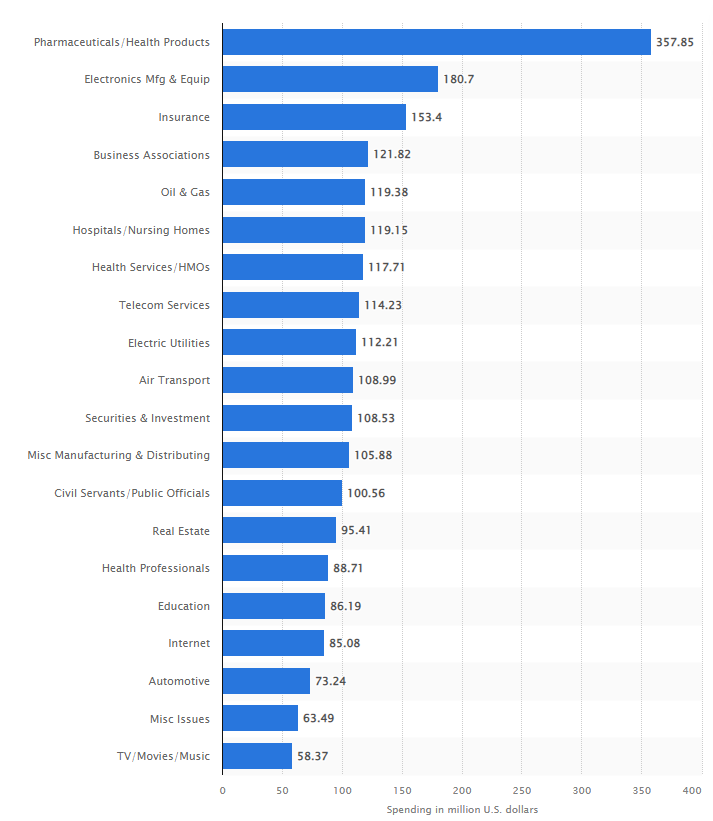
Hmm, gun groups don’t make the top 20. Where do they actually sit when it comes to headlines like, “Gun rights groups set new lobbying spending record in 2021“?
“Gun rights groups spent a record $15.8 million on lobbying in 2021 and $2 million in the first quarter of 2022.”
Oh wow… a whopping $0.25 on the dollar compared to TV. They certainly have a stranglehold on Congress when their spent dollars since 1998 ($190 million), nearly a quarter of a century of spending, would only put them as the second biggest spender of 2021. Real big movers like getting $0.04 per dollar spent by guys like Pfizer, it really commands their time and attention.
I believe the professor is crossing streams on that last part a little bit too, with constitutional concealed carry. Why is the concept that a legal owner of a firearm is also a legal carrier of a firearm by default a radical concept? That logically tracks with me nicely. If you are not too dangerous to possess a gun you are not to dangerous, legally speaking, to carry it.
Skills wise it is incumbent upon the owner to develop those safe firearm skills as they must develop safe skills in any other activity with risk. The licensure of the driver and taxation of the vehicles in various ways are ultimately for the maintenance of the road system with the side benefit of providing a nominal barrier of entry to drivers of certain skills, in practice though this is no barrier as unlicensed drivers are rampant and drivers who should not be licensed due to dangerous behaviors (intoxicated, age, etc) are also. We merely accept these risks and place the responsibility upon the individuals to determine when or when not they should drive.
The most common punishment for violation of licensure rules is, you guessed it, a fee… aka a tax.
Yet somehow placing the same degrees of personal responsibility onto legal gun owners to be legal gun carriers is seen as crazy, simplifying it all down to make everyone’s lives easier is touted as recklessness, by the same people who cannot keep unlicensed drivers and intoxicated drivers from doing wrong but we shouldn’t look to hard at that. They assure us they can get it done with guns, as they fail with cars and guns currently, they just need more gun control laws.
Last summer, in the wake of mass murder of 19 students and two teachers at Robb Elementary in Uvalde, Texas and a racist killing of 10 Black Americans at a supermarket in east Buffalo, New York, President Joe Biden and Congress broke through nearly three decades of inaction on gun reform to enact bipartisan gun legislation. The Uvalde and Buffalo shooters had also used an AR-15 style weapon, as had high body-count mass killers at a country music festival at a Las Vegas hotel, the Pulse nightclub in Orlando, a Walmart in El Paso, Texas, and other venues to which America’s mass death lottery came.
This analysis doesn’t work professor. Yes, events happened where the AR or a similar rifle was used to devastating effect, but the majority of mass shootings still occur with handguns (71% last I recall seeing a number) and each of these events had a unique motive which was ultimately uninfluenced by that blatant illegality of the attack.
But the new law did not include a ban on access to such firepower.]
Because it was for political ‘did something’ points, not safety.
[Instead, it enhances background checks for gun purchasers under the age of 21, encourages states to implement so-called red-flag laws that enable temporary confiscation of guns from people deemed too dangerous to have them, and strengthens laws against straw purchasing and trafficking of guns. Unfortunately, background checks and red-flag laws are easy to evade in a nation in which 19 states and nearly 900 counties have adopted some form of “Second Amendment Sanctuary” law or resolution. The end result of this movement is that in 61 percent of U.S. counties, existing federal and state gun laws are unlikely to be enforced.
Oh, now that is a stretch. No FFL is going to forego doing a NICS check just because they’re a ‘sanctuary’ city, county, or state. They aren’t. You, a professor of law, should well understand that the sanctuary movement is a feel good one. It is a solidarity play stating that the state or county will back its citizens in against blatant and egregious federal overreach on something like a suppressor or a pistol brace. They aren’t going to go to bat for a prohibited person who committed an assault or homicide, especially mass.
Also background checks and red-flag laws are easy to evade, period. Not just in sanctuary locales, but in California, New York, and Illinois too. They require voluntary compliance to work at all and we are in a pretty settled state of what that voluntary compliance looks like. Those that care are caring and following the law and those that can’t be bothered won’t be.
Oh, and if 61% of counties wouldn’t enforce federal or state gun laws, how do you think a reinstated assault weapon ban will do literally anything? If you passed a total confiscation today, and got it enforced tomorrow, you are only 39% of counties are going to give a crap. Many of those are populous counties, sure, but plenty of counties right next to them are going to tell you to get bent by your own admission.
So what’s the play?
Despite strong popular support for an assault weapons ban, mass shootings continue unabated in America, with more than 600 occurring thus far in 2022. Our current moment of inability to stop obscene, senseless gun violence and the increasingly deep division between states that want and enforce restrictions on guns and those that don’t and won’t is reminiscent of an earlier period in our nation’s history: the 1850s.
Interesting, listen did you know California is the leading state for both mass and school shootings in the nation despite their gun control laws? Now you do.
The parallels, though rough, are telling. In the 1850s, opposition to slavery]
Stop! You are not comparing the opposition to curtailing the constitutional right to own a firearm for self and community defense to the slave trade… you are not going there with your ‘rough parallels’… are you?
accelerated in the North, but the original structural accommodations to slavery produced a stalemate and politicians were not able to curtail it. Then as now, there was a growing disconnect between the polity and politics. We should think long and hard about where that could lead.
You did… wow… you went there. Hey did you know that the entire history of gun control is deeply rooted in racism, specifically for control of minority and ‘undesirable’ populations? Now you do.
Many Americans assume that the antebellum debate over slavery was a moral one. But in her expansive history of abolition, scholar Manisha Sinha shows that abolitionists’ moral arguments were never enough to end slavery. Instead, in the 1850s much abolitionist argument turned from the realm of religion, or moral and political philosophy, to constitutional interpretation.
Oh this is an easy one, I won’t get into the weeds on it right now but to summarize it.
- Slavery was not the moral conundrum of all badness and evil in 1850 that it is today, that was a radical new idea that started about the time the constitution was signed.
- Slavery was part of the world economy for millennia, not centuries, somewhere on 8,000 years and across most civilizations it was common practice in some form. Slave, Serf, ‘Indentured’ Service, title it how you want the concept is ancient and the idea of getting rid of it is very fresh in comparison. For scale, 5G tech has been around since 2016 and the internet was started in 1983. For time scale 5G, would have been invented in the 9th century if it were the concept of abolition and the concept of human slavery as we understand its history.
- The United States and the modernizing Europe were the perfect breeding ground to begin ending the world publicly accepting the abolition of the slave trade but that didn’t erase the millennia of world wide acceptance of the practice.
Judging the past by modern standards and morality is stupid, it is doomed to failure and frustration. It is the past. It is immutable. It is the pathways which brought us to today so we can tackle modern problems with modern solutions. Using abolition as a parallel towards violating the hell out of constitutional right… that’s quite the Uno reverse card to play. We banned slavery and within a century had equal constitutional rights protections enshrined strongly in law, so that means we can crush the Second Amendment?
But constitutional argument, too, was unable to advance abolition because the Supreme Court upheld the Founders’ original compromise to slavery.]
Not surprising. Again, look at history through in context and not the modern gaze.
[For example, the Court enforced the constitution’s fugitive slave clause against northern states that tried to protect free and escaped Blacks from enslavers. And in the Dred Scott case, the Court excluded Black people from U.S. citizenship and tried to settle the question of slavery for all time, denying Congress the power to stop its expansion to western and northern territories — an accelerant to civil war.
What seems consistently understated in these arguments is that slavery was world economy normal. To put it into a modern economic context, abolition would be talking about immediately putting the farming industry out of business, shutting down how they operate and making them rebuild a new model from scratch with parts of the old model banned outright. No more tractors or irrigation aids, they’re all banned now because of… Climate Change lets say. My analogy is “rough” also, but its in line with a moralist argument taking on an entrenched system of labor that is critical to the current system remaining able to produce.
Abolition, while just and morally correct, was massively disruptive (we had a war about it, remember) because of the other pressures the US had been putting on the south too. You cannot stand on a moral argument alone and ignore real harms that will come from a decision, even a correct one. Being blind to how disruptive a decision is just increases the resentment of the people you are harming with it. Make no mistake, abolition had to cause serious short term harms whether we had a war about it or not.
That is the great sin of the gun controller, their argument is ‘moral’ therefore it is unassailable about its negative consequences, and they don’t even have literally the free agency of human lives as their base. They just don’t like firearms. Abolitions was about ending the double standards of free agency for people, living and breathing human beings.
Banning ‘assault weapons’ isn’t even close to having the same moral authority. It actively attacks the human right of free agency, specifically the defense there of, that abolition and later the civil rights movement extended to the formerly enslaved and their citizen decedents. We are literally arguing that constitutional regression on the ability of people to protect themselves is progress.
The fact that slavery is being used as the moral equivalency is mind boggling here. Good thing we’ve got that bloody shirt to wave to criticize detractors with, because this would be a shit argument if we couldn’t point at the dead for inflated moral justification.
Similarly, in the debate over gun regulation, moral arguments, appeals to the sanctity of life, especially of children, have not resulted in solutions that actually stop mass killings.]
Because the solutions don’t stop mass killings. They never did. Never can. They suck. They’re simplistic Utopian fantasy garbage.
You’re trying to make a moralistic argument that banning slavery somehow physically got rid of slaves and the horrific living conditions therewith (it didn’t), so banning assault weapons will get rid of them? They’ll disappear? Poof, gone? No more assault weapons and no more mass violence, right?
How naïve.
[And the Supreme Court, as in Dred Scott, has imposed its will, contributing to Second Amendment absolutism.]
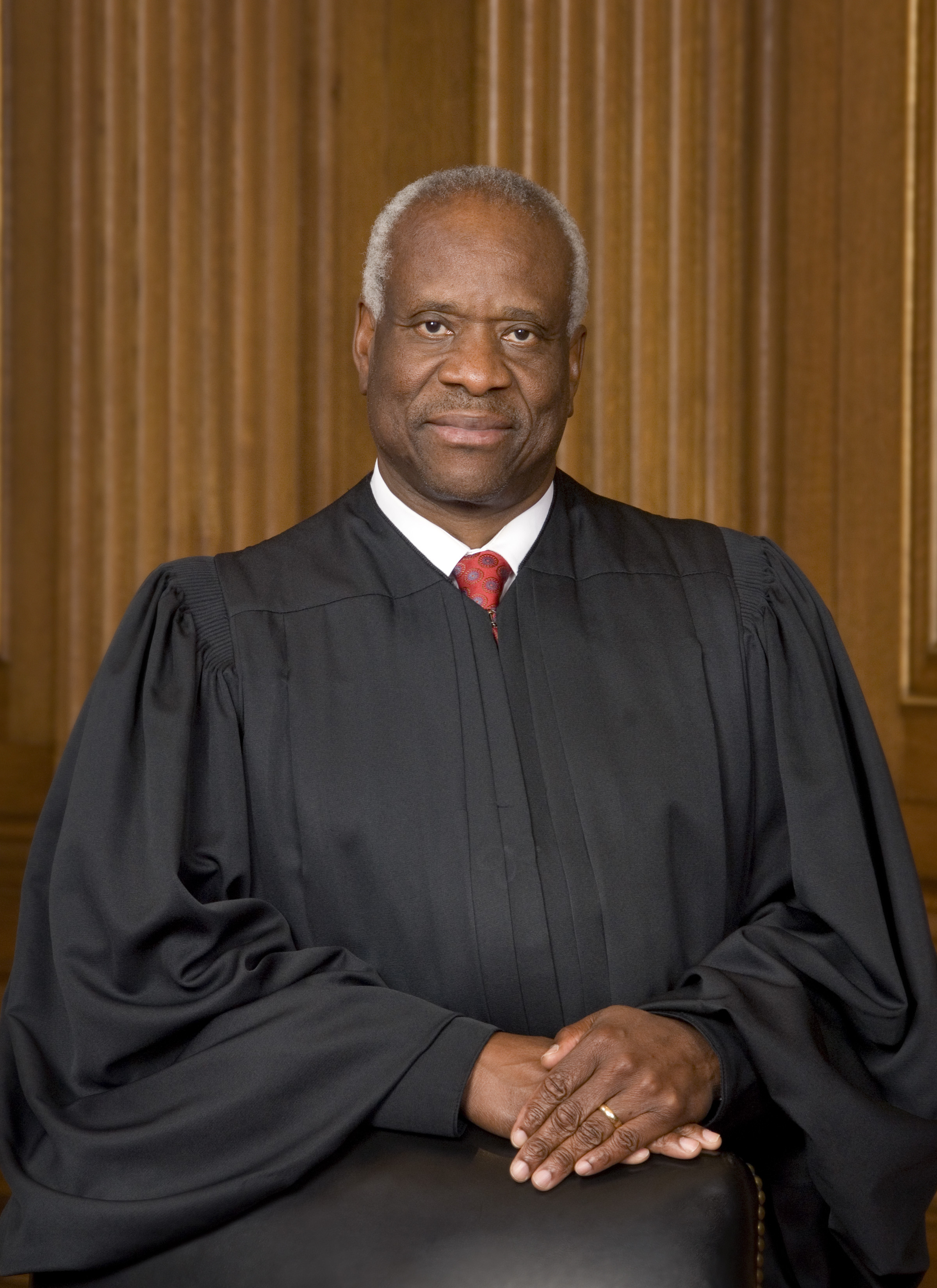
Hardly, the Supreme Court has left plenty of regulations in place, even after Bruen.
[ In 2008 it bypassed the words “well-regulated militia” to strike down a strict local gun law and enshrine for the first time an individual right to bear arms for self-defense in the home.]
You bypassed “the right of the people to keep and bear arms shall not be infringed.” so bypassing seems fair game.
[Then last June, emboldened conservative justices expanded rights for gun owners; in New York State Rifle and Pistol Association v. Bruen, the Court established a constitutional right to carry firearms in public.]
Keep and Bear.
Or the synonyms, Own and Carry, since we’re being obtuse here it feels like.
[And it denied the State of New York the ability to insist that applicants for a license to carry a concealed weapon show a special need for self-protection in public spaces.
Because no other constitutional right has to be justified to the state with a ‘special need’ for its exercise. Do the decedents of the formerly enslaved have to justify their continued freedom and citizenship status? Do they need to show ‘special need’ to cast a vote? How about a ‘special need’ for legal representation if they are accused of a crime? Are the very real crimes in New York, not to mention Chicago or L.A., not ample need for self-protection in public spaces? The state sure as hell isn’t doing it. They have no legal obligation too either.
The state cannot be held liable for failing to protect you, so why should you have to justify to the state a ‘special need’ for your protection in public and upon your property when they don’t have to do it?
Make it make sense.
The Court issued this imperious decision at the same time Congress was enacting its new bipartisan gun reforms.]
It’s almost like there are three separate branches of government to check each other. So not only should they not all get along and think the same, they should be actively checking the other two’s work at all times. In fact, that’s literally the job of the Supreme Court.
Also, can we stop pretending the BSCA does… anything. Other than annoy FFLs with a new 4473, ask people if they’re really super sure they aren’t making a straw purchase, and inconvenience and deny young people who have to go through a more stringent background check now. Imagine believing these changes increased compliance and public safety, that the additional headaches have people seeking to ‘avoiding background checks and red flag laws’ less often, as you’ve pointed out it is allegedly so easy to do.
[State political actors that try to promote gun safety are now bearing its brunt.]
Good, their policies were wholly in favor of state power over individual constitutional rights and did nothing to actually support safety or security.
[The case has unleashed scores of lawsuits by gun enthusiasts against state and local gun restrictions. Lower courts have invoked Bruen to halt laws that had been viewed as constitutional,]
Until Bruen reset the double standard the second amendment was held to. Remember when slavery was constitutional? Did you just say that Dred Scott upheld the constitutionality of slavery? Didn’t you just use the double standard of the human condition that is slavery to bolster your arguments for gun control as a moral imperative, but now we must honor court decisions as settled?
[including a local assault weapons ban, a restriction on homemade firearms and Texas’ ban on 18-20 year-olds carrying handguns publicly.
All of which are infringements, the mental gymnastics to argue otherwise are Olympic level.
Keep and bear. Own and carry. Shall not be infringed. All of this is really basic. The state needs a good reason to suspend your freedoms, any of them. You have the right and the state has the obligation to let you defend yourself from any legal encroachment upon your freedoms. This includes your keeping of and bearing of arms.
In short, you should be a convicted and imprisoned criminal or hospitalized if the state believes, and can prove, you should not be bearing arms or exercising other free agency. It should not be incumbent upon you to prove anything about the exercise of your constitutional rights to the state, the state must prove against you that you cannot be entrusted thusly.
Abolitionists, too, were boxed in.]
Oh no… no… were back to banning the AR-15 is exactly like freeing the slaves…
[In the 1850s, as moral and constitutional arguments failed, they moved to politics. Disparate northern bedfellows who opposed slavery ranged from racist “free soil” advocates who wanted to keep Blacks out of their states and not compete with free labor, to Radical Republican abolitionists who supported Black equality. The political argument that gained traction among northerners was the unifying idea of “Slave Power” or “slavocracy,” in which the country was governed by a small class of southern planter-elites.
You mean there were a disparate group of opinions in the nation during the fading era where slavery was still a world wide norm and you had to unify them around an unifying if exaggerated political idea? Well that sounds familiar.
How did we ban marijuana again?
But antebellum politics was gridlocked by systems and narratives that had perennially accommodated slavery. In particular, the Constitution’s “3/5ths clause” and the allocation of two senators to all states gave disproportionate power to small-population southern states. Incapable of ending an admitted evil, all effort at containing or reforming it stymied by political polarization, this led to more compromises that extended its life.
You are saying that the Senate, which gives all states an equal voice in one house of Congress to prevent a tyranny of a majority in one or a few high population states, and the 3/5ths compromise which kept southern states more placid and within the union despite things having turned against them for years like free states being able to join the Union at will while slave states needed a free state partner combined with the coming crushing blow to their economies prolonged slavery?
Duh.
Again, slavery was any powerful nation’s practice for nearly 8000 years. The abolition movement was the radical departure, being scarcely a blip of a thought on the societal scale, and yet rapidly implemented in about 100 years of total time. The people of the period, even the most extremist abolitionist Republicans, were generally looking for a swift but peaceful transition to freed people. We quashed the concepts of accepted slavery in the West in less than 2% of the time over recorded history where it was accepted.
Imagine room where everyone agreed on a concept, at least in a general sense, for one hour and then in the last minute and twelve seconds everything about that concept was reimagined and implemented anew. It’s fast.
Shoehorning this awkward ass-backwards analogy to push for the curtailing of a constitutional right seems… well, ass-backward.
This cycle ended only with a war that killed more than 600,000 people.
Yes. It did. Radical changes often require bloodshed, often because breaking the old structure to its foundation is necessary. There was no way we were going to get slavery over quickly without bloodshed. Slavery was always an institution of violence, it was often a part of the violence of warfare.
Also, the cycle is not ended. Slavery is alive and well in the world, we just don’t openly approve of it in the nicer parts of the world anymore.
Will it take civil war for us to become a nation that protects innocents from being sprayed with bullets?]
Only if you and your crowd really stupidly want to push it.
How is it that the legal and worldwide acceptance of slavery until the late 18th century A.D. is being compared to the patently illegal action of homicide, which we can find outlawed as early as 4,000 years ago? Our definitions of who counts as slayable with or without consequence have certainly evolved, but the recognition that an unjust killing is wrong and punishable by society is four millennia old at least.
[We are already in an uncivil culture war in which attacks on books, teaching accurate history, transgender children, drag queens and more are modern versions of an old politics of stoking fear and resentment among white voters about their purported loss of dominance.]
No, I’d still consider this civil overall. Some folks on both ends of politics have certainly been less than pleasant about it, but in most respects we’re still talking to (sometimes unfortunately just ‘at’) each other. If this culture war had turned uncivil beyond that absolute most fringe and violent extremes in our society the bodies would be stacked much higher.
[According to communications scholars, right-wing politicians now tote guns in campaign ads to appeal to whites and pro-gun politics are a continuation of the decades-long Republican southern strategy of cultivating white racial solidarity.
Then why do they support armed Blacks?
You bring up a great many sore spots in the ‘culture war’, with evidence of abuse from both sides, and decades of deceptive and manipulative language being used to try and sway opinion, and you’re surprised when your opposition isn’t buying the fresh brand of bullshit? The audacity to suggest there is moral equivalency between hobbling the 2nd Amendment to the whims of the state and abolishing the practice of slavery is truly amazing.
Great play of the ‘old white racists’ trope too, they worst ones keep dying off as the culture continues to shift, but the younger and better informed than ever gun owners won’t be dead soon. The largest increase in gun ownership rates in the last three years came from women and minority demographics. But sure, being against gun control is like not wanting to free the slaves.
So many GOP politicians have accommodated and competed for base voters by loosening gun restrictions, not unlike the way national law was bent to accommodate the interests of enslavers from the Founding to the Civil War or the way Democratic candidates competed for white voters in adopting ever more ridiculous Jim Crow laws in the 19th and 20th centuries.]
Holy shit, I wasn’t serious… And are we seriously blaming the Democratically Supported Jim Crow laws on modern Republicans?
[This political performance art has incited and enabled violence that politicians can’t control, as well as attacks on government, as seen on January 6, 2021.]
Now do the CHAZ in Washington State.
[Like the KKK of old, self-declared militias of today are not well regulated. Extremist groups, mainly in open-carry states, now wield guns to deny the election results of 2020 or counter free expression by Black people, LGBTQ+ people, abortion advocates and others they disagree with.
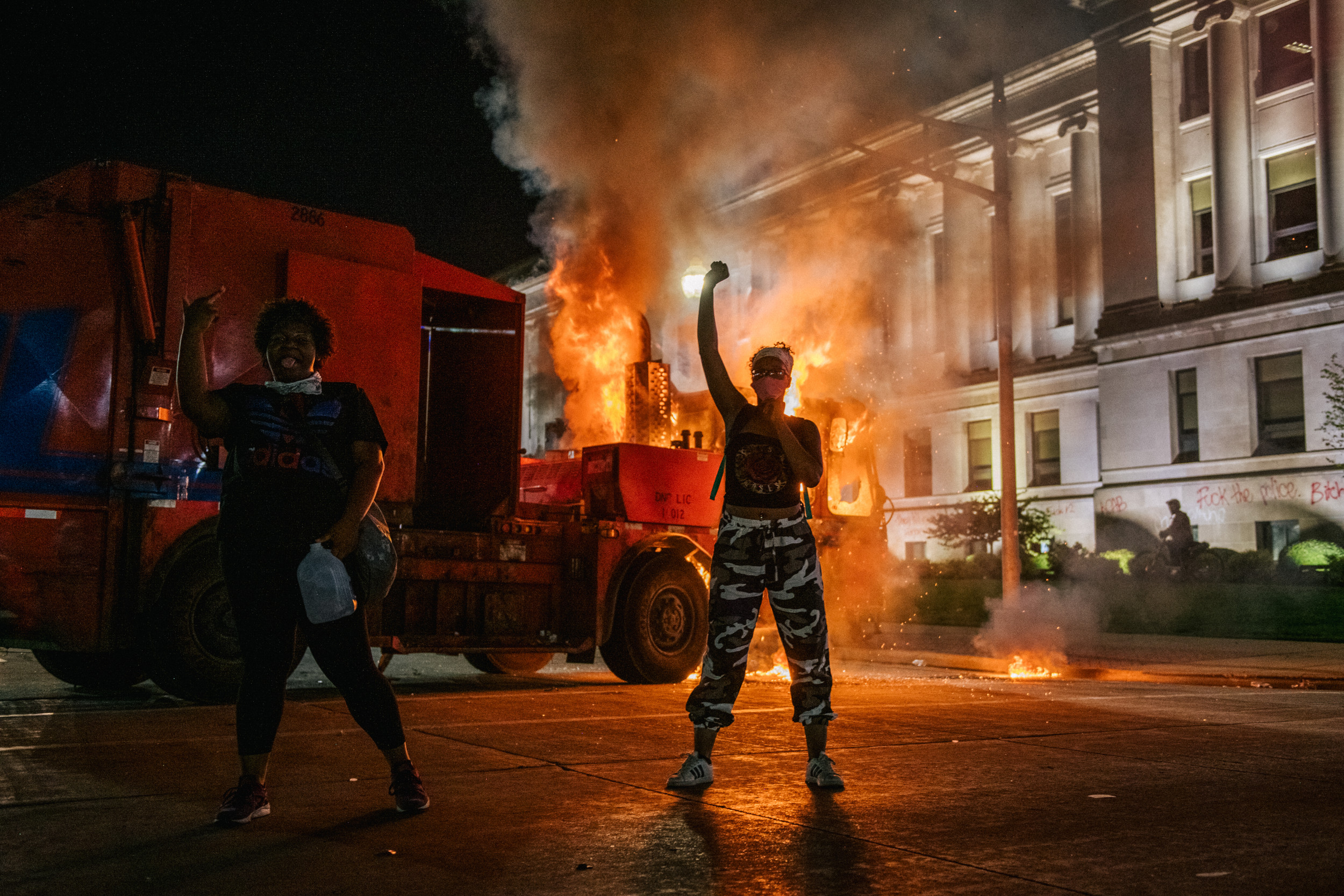
What type of free expression are you worrying about them countering? Look, I understand a group of armed and grumpy folks who you disagree with isn’t a comfortable thing to deal with, but the beauty of the Second Amendment is you can be equally armed. It is the ‘FAFO’ clause of US law. The beauty of modern society is that they can be as armed to the teeth as they want and as grumpy as they want and if they try to assault or kill you they go to prison. Feeling uncomfortable or not as safe as you’d like is not the equivalent of being ‘prevented’ from doing something that is within your legal right to do. Intimidation is even a crime in many forms.
I find many of the modern militia movements pretty cringeworthy, not as cringeworthy as comparing gun control to abolition, but still usually crass and distasteful. But I wouldn’t have them stop expressing their opinions any more than I would have them disarm for making me cringe.
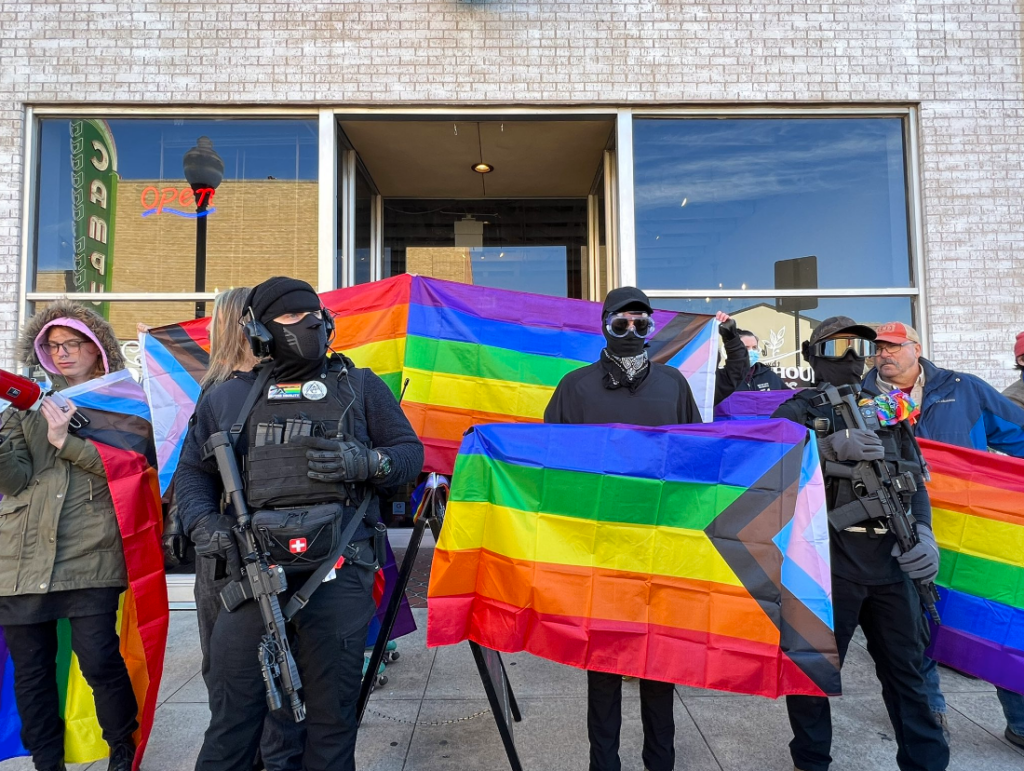
One day, not today, but one day people are going to recognize the universal protections of the constitution don’t need equity to work out, people just have to understand them… I hope.
If you, a free willed individual, choose not to arm up and become proficient in use of a weapon, that is your choice. It is still your right to redress the grievance of an assault against your person, assuming you’re around to, and the state’s obligation to seek to prosecute that offense. You can also choose not to vote, not to drive, not to work, not to eat even.
You don’t then get to make it everyone else’s problem though.
If your response to a variation on ‘be prepared in case a bad thing happens’ is to say, “Well, bad things shouldn’t happen.” you’re a child. Children don’t get to weigh in on adult problems. We live in a relatively safe society with a good chance every single day that nobody will deliberately or accidently kill us. That’s awesome. We can’t legislate it into an absolute though. It’s that whole free agency thing again, some people use it selfishly, irresponsibly, or for downright evil.
We will never legislate safety to existence, we can only encourage safe behaviors in a dangerous existence and punish the unacceptably unsafe acts.
Our constrained democracy seems as incapable of stopping mass killings now as it was incapable of stopping slavery then.]
And here we see this clumsy white guilt analogy fail again. We didn’t stop slavery then. We haven’t stopped it now. We have made it illegal and the world puts quite a bit of resource into enforcing that law, but it isn’t stopped. Mass murder is also illegal, nationally and internationally, with similar efficacy on stopping it.
Our ‘voter suppression’ squabbles of today over things like voter ID’s provided free by the state to anyone who doesn’t have other ID are laughable compared to the outright violence of yesteryear. We’re crying about a senator or congress member getting to move a line on a map that improves their chances of keeping their seat like its armed thugs at polling places ready to beat or execute the first uppity [insert group being pandered too or about] to cast a vote.
God we have it really good in 2022. We are so first world problems its tragically hilarious. As crazy as the divides today remain, for all the reasons, and for all the very real and very serious problems that persist, we have it damn good. How good? The Black population of the United States has a 50% greater net worth than the entire African continent. Yes, all problems included, the decedents of those enslaved and brought to America are worth 1.5 times what their genealogical continent of origin is. Does that mean work is done? Not in the least. But it does help bring context to good things continuing to happen if look actually look for them.
[Congress requires a supermajority to pass anything because of regular use of the filibuster in the Senate. Since Sandy Hook, Democrats and Republicans have sorted into separate geographic regions and extreme partisan gerrymandering ensures disproportionate representation in Congress by the gerrymandering party rather than alignment with popular will.
Whose fault is it, that we keep sliding down increasingly partisan politics seems to have been a joint slide into madness by both parties (hence the use of ‘gerrymandering party’, which I do appreciate) who just sit there and blame the other one. Every dirty trick a Democrat accuses a Republican of and vice versa are all the sort of political machination the public is sick to death of.
We dropped from an approval rating in 2001 of 84% in Congress to 9% in 12 years. 12 years!
Today its up to a scorching 22% and has never above 35% in the intervening space.
We have no faith in our Congress, so perhaps its good that they’re gridlocked and can’t do much unless most people actually agree it is a good idea.
As for popular will? Will of the mob is dangerous and the reason we went with a Republic in the first place. What would the will of the mob had done to people during COVID? The will of the mob calls for some terrifyingly evil shit sometimes.
Popular will does not and has never necessarily meant a proper or just course of action. The populous is stupid. Mobs are stupid. Letting the mob opine on things that require expertise is stupid. Gun control is one of those things that require expertise. The population can opine broadly, but the idea (not working out well at the moment) is to fill Congress with actual experts and staff them with experts who can make nuanced decisions that the public steers more gradually through their voting and commentating.
Popular will gets thrown out the minute it is inconvenient anyway, its just something to bring up when it happens to be a stat you can say is on your side. Survey 10,000 people on whether they support gun safety and you probably get 10,000 ‘yes’ votes because your survey is too dumbed down to convey useful motive. Ask those same 10,000 people how a background check works or whether or not an online gun sale is subject to one and I bet we see some abysmal stats on comprehension.
An assault weapons ban passed the House this year largely on a party-line vote, but because of the filibuster, such a ban requires 60 votes in the Senate and won’t advance.]
That was always for political capital and never about safety. Next point.
[It’s also not likely to pass the House in the next Congress in which House Republicans will have a slight majority. Democrats no longer cower to a weakened National Rifle Association,]
Ha, because they don’t have to. Democrat voters will keep electing and voting for Democrat almost without any effort, so as long as they ‘try’ whatever pet gun control item is the flavor of the week they’re more than fine electorally on that front. They get just as much political gain from failing as they would succeeding, but with none of the negative side effects of the success. Its why the BSCA was such a nothing burger, because it was going to pass. Because it was going to pass and become law there couldn’t be anything that would actually rock the boat and make people really mad in it. Democrats and Republicans can ‘pass’ all the bills they want, they know the bill will die in the other house and score their team some cheap points with their base.
Old tactic, really annoying, keeps happening because it works on stupid people.
[but with a bare majority in the Senate and many GOP politicians beholden to extreme base voters, gun safety advocates will be forced to keep fighting this battle for years if not decades.
In a nation with more guns than people and an estimated 20 million AR-15-style weapons in circulation, violence is a constant specter. But the lesson of the 1850s isn’t that violence or civil war is inevitable, it’s that when moral and constitutional argument fail, politics has to take over.
This supposition is so.. so much garbage. That gun ownership rate and existence of the AR-15 are a death specter somehow in the US, so much that we’re implying a second civil war is a possibility, and yet…



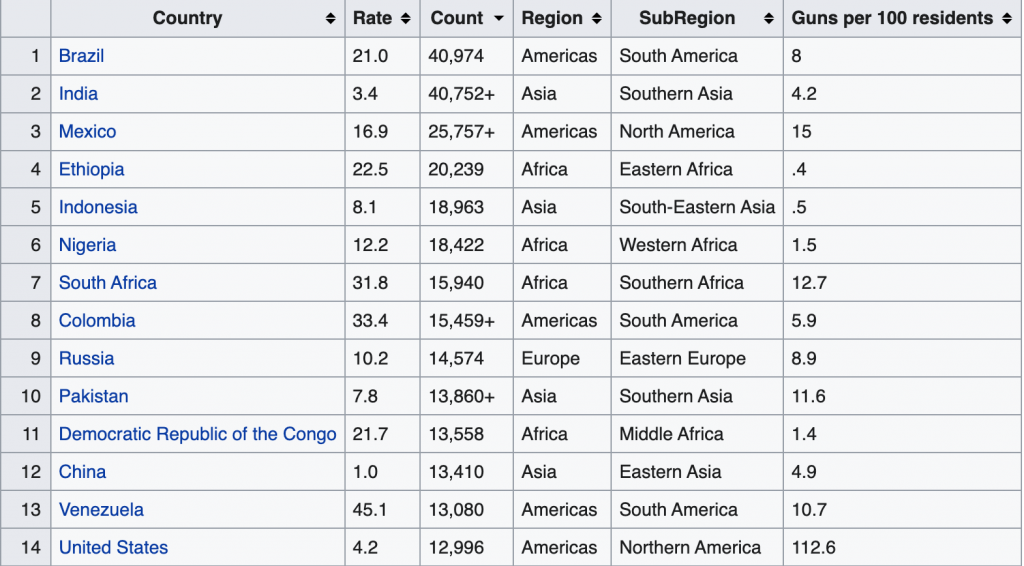
Those who wish to ban assault weapons should look to the abolitionist movement for inspiration.]
No, they shouldn’t. They should instead look at the prohibition movement, realize what a dumpster fire that was, and promptly move on with their lives because the idea of prohibition is asinine.
[Anti-slavery visionaries like Frederick Douglass and Thaddeus Stevens embraced politics as their means and agitated for more, not fewer, people being allowed to participate in democracy in order to make our founding ideals of freedom true for all people.]
By this logic I want more, not fewer, armed people able to defend themselves, both from and despite a state with no obligation to defend them.
[When it comes to freedom from fear of gun violence, our best hope is to bolster and repair democracy itself so that the popular will can ultimately prevail.
Freedom from fear… You don’t have that.
You don’t get that. You can’t get that. You can’t legislate fear away and anyone advocating otherwise is a fucking idiot or they’re lying to you to sell their bullshit.
I’m hoping professor of law Sheryll Cashin is just an idiot here.
The Rocket Propelled Flamethrower – Yep, It’s a Thing
In researching some of the Russian weaponry being used in Ukraine and ran across the TOS-1, which led me to the phrase Rocket Propelled Flamethrower. Now I had never heard of such a thing. My military occupational specialty involved machine guns, not rockets. This genre of weapon is popular enough that the USA had one called the M202 Flash, and the Chinese had one as well. The Russian RPO-A Shmel and the RPO Rys are both classified as Rocket Propelled Flamethrowers.
The idea behind these weapons is simple. Flamethrowers are great for clearing out infantry forces in embedded positions. In World War 2, the flamethrower was well known for being very capable pill box medicine. The problem is that flamethrowers have a very limited range and tend to be big heavy beasts.
How can you increase the range and ditch the weight? That’s easy. Turn it into a rocket-propelled flamethrower.
Russian Rocket Propelled Flamethrowers
The RPO Rys was the first time the Russians moved towards a modern flame-launching option. The RPO Rys replaced the LP-50 flamethrower. The LP-50 weighed a mighty 50 pounds with full tanks and a flame gun. Russian soldiers launched flames out to 50 meters with this thing, and that’s far for a flamethrower.
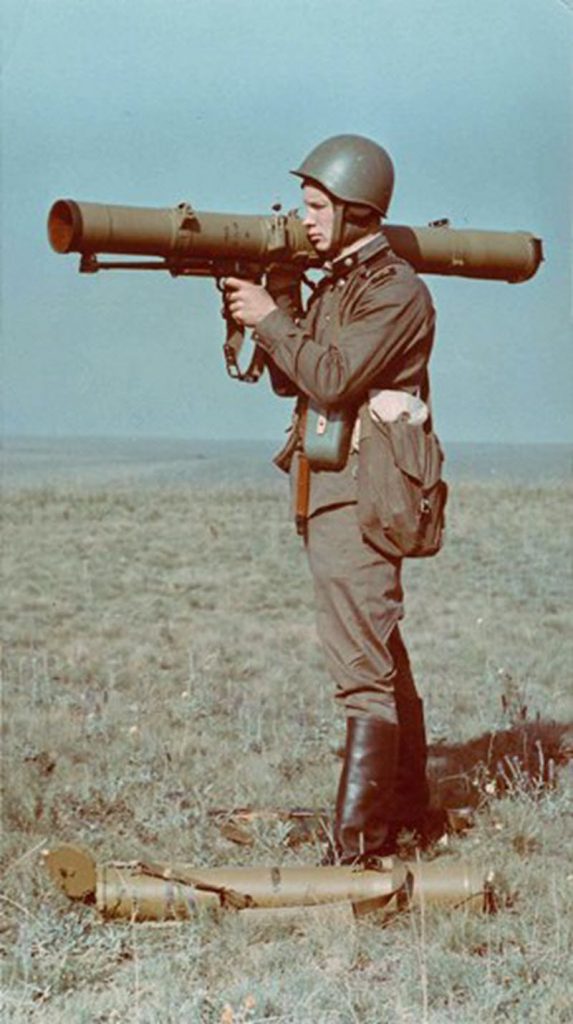
The RPO Rys looks a lot like an RPG 29. It’s a reusable rocket-propelled flamethrower that uses a warhead that contains four liters of napalm. Russians launched RPO Rys rockets out to 400 meters giving them ten times the effective range of a standard flamethrower, and the loaded launcher weighed only 27 pounds. The Rys has served the Russian military since 1975.
The RPO-A Shmel is a bit newer and came out in the later 1980s. The Shmel changes the game. Western military forces classify the Shmel as a thermobaric warhead rocket launcher. Unlike the Rys, the Shmel is a fire-and-forget weapon. Much like the LAW, it provides a lighter option that is disposable after being fired. Russians trimmed the weight to 24 pounds. The effective range isn’t known, but the sights go up to 600 meters.

Rocket-Propelled Flamethrowers In Use
What’s the point of a rocket-propelled flamethrower? These are not necessarily anti-armor weapons. They might be able to make an armored vehicle button-up and maybe even score a mobility kill with a good shot, but it’s not the optimum option.
These are anti-personnel weapons. When your enemy establishes a firm position in a building, bunker, or cave, you have a few options. Air strikes work, but that’s expensive and logistically complicated. You can assault through, but that could cause a lot of casualties. You can launch rockets into the position, but depending on the environment and the rocket you have, that could do very little damage.
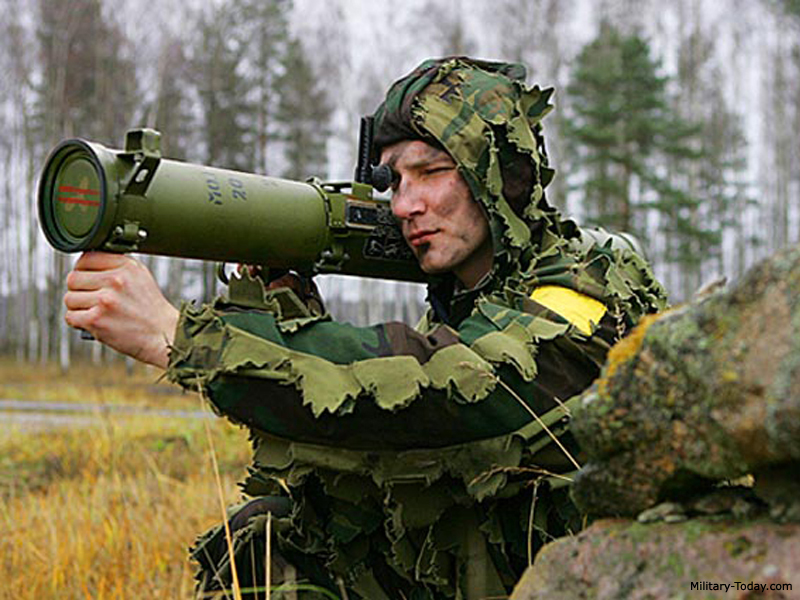
In these situations launching a napalm-filled rocket or thermobaric warhead into the building can solve your problem. It sucks the oxygen out and can kill a room full of belligerents quickly.
In urban environments, these weapons can turn a firm position into nothing more than a target. Any exposed openings are targets for these rocket-propelled flamethrowers. The Russians fielded these weapons in Afghanistan, and one was used during the Belsan School Siege. In fact, it’s largely agreed that the first shot fired during the siege was from an RPO-A Schmel.
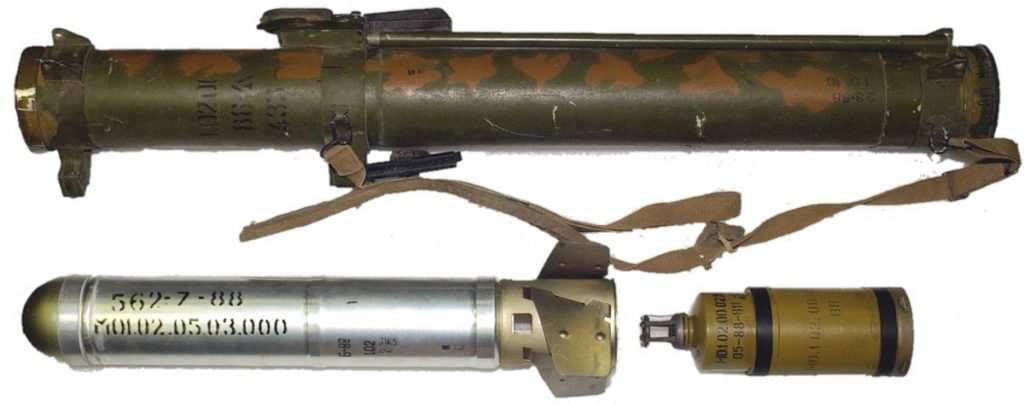
The RPO-A Schmel seems to be much more popular than the Rys. The weapons were used extensively in Ukraine. In fact, both sides seemed to have the weapons, although they were more commonly employed by the Russian forces.
The Scariest of Rockets
Russia might not be the only country with rocket-propelled flamethrowers, but they do seem to be the most anxious to use them. Their employment of these weapons seems quite common, and in urban environments, it’s easy to see why. Rocket-propelled flamethrowers are a terrifying but effective weapon, and I wouldn’t be surprised if they become more common in modern warfare.
Skip the Trauma Kit for Legal Reasons?
The Armed Attorneys channel has plethora of videos on a variety of topics and are also a solid source for current cases making their way through various legal systems.
The topic currently… Trauma Kits
Now, I am an enthusiastic supporter of the trauma kit. Especially the vehicle/range bag variety. If you need to control bleeding or another immediate life saving act it is far more likely to come from an accident than a gunshot but your kit can cover down on all of that. A good first aid class that covers critical injuries and medical conditions is also tops.
But I am not an attorney.
The Problem
The problem is intent. An attorney isn’t going to go after you for using a trauma kit on an accident victim or yourself, but an attorney defending the person you shot in court can certainly spin the theory that you intended to shoot their client. By carrying a means to patch them the theory could be that you felt guilty about shooting their client and that is evidence that the shooting wasn’t necessary under the circumstances.
Probably won’t hold an ounce of water in a criminal court because helping someone or being remorseful are not illegal, but a civil one? A court where they’re trying to get assess your liability for costs of an injury may see things differently.
My conclusion
I am going to continue to carry my trauma kits in the way I do, vehicle and range bag borne and on my gun belt too. Those circumstances are highly unlikely to place you or I in any sort of ‘intent’ civil hot water. I know plenty of people who have on person kits also, I generally keep ‘locale’ kits instead of carriable ones. The locale kits can be much better stocked because I don’t have to deal with the weight either.
But even if I just put a tourniquet in my pocket and end up using it, in my opinion that will be my lawyers job to defend. They may not thank me for carrying aid gear on me, but that’s their problem and I pay them to work on that problem.
The niche circumstance of an opposition attorney using the fact I carry aid gear as some sort of ‘gotcha’ for guilt when I consistently carry aid gear for any emergency injury nearby isn’t going to get me to nix the trauma kits. I don’t think it should concern you too much either.
The only way I can see this getting serious legs as a legal challenge to your shooting’s legitimacy is if you just so happened to bring the aid gear with you that day and do not normally and you had some manner of prior hostile interaction with the person who you shot.
But again, I am not an attorney.
Hawaii CHL: It’s About Time
Honolulu police on Oahu, Hawaii issued the first concealed carry permit for the county today. This revolutionary impact of SCOTUS’ Bruen decision marks the first substantive victory in a long list of cases that are being fought right now in courts from NY and NJ, to CA and more, as anti-gun legislatures attempt to circumvent the highest court in the land. Hawaii was the first to fall, in what looks more and more like a massive domino arrangement.
As significant as this Hawaii win is, it’s worth noting that this was just the first of hundreds of applications submitted since November, and there is still resistance, most notably in mentions of potentially denoting “sensitive areas” where carry might be prohibited. Given how well this same end-run is going for NY, CA, and NJ, it’s unlikely that it will succeed in the end, but it may well have to go to SCOTUS to be put entirely to bed.
Hawaii, though small, going to shall-issue is a major win for pro-gun advocates as it has been among the most strident of anti-gun legislatures for decades. The small island chain has a limited amount of both public and private land, meaning gun ranges make up most of the potential shooting spots. Unlike many of us on the mainland, heading out to a patch of BLM land to bust caps really just isn’t a thing for most of Hawaii. This means private range fees stack on top of permit and transfer fees, potentially pricing the poorest of Hawaiians out of gun ownership. Much is yet to be done to improve the situation, but this dramatic first step is a harbinger of what’s to come both in Hawaii and across the country as the Bruen decision’s impact is truly felt for the first time.


